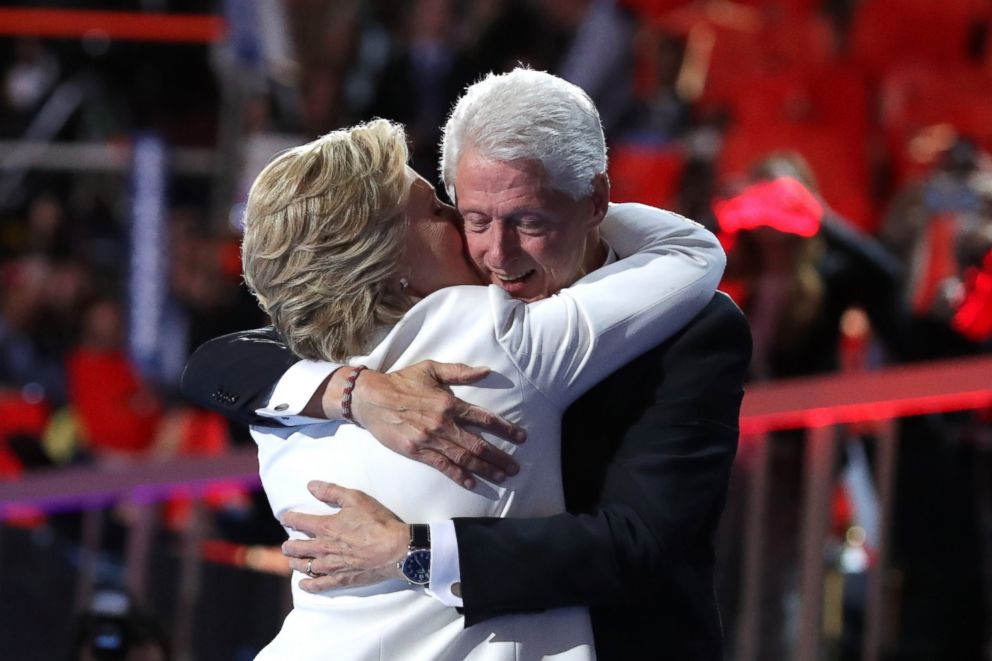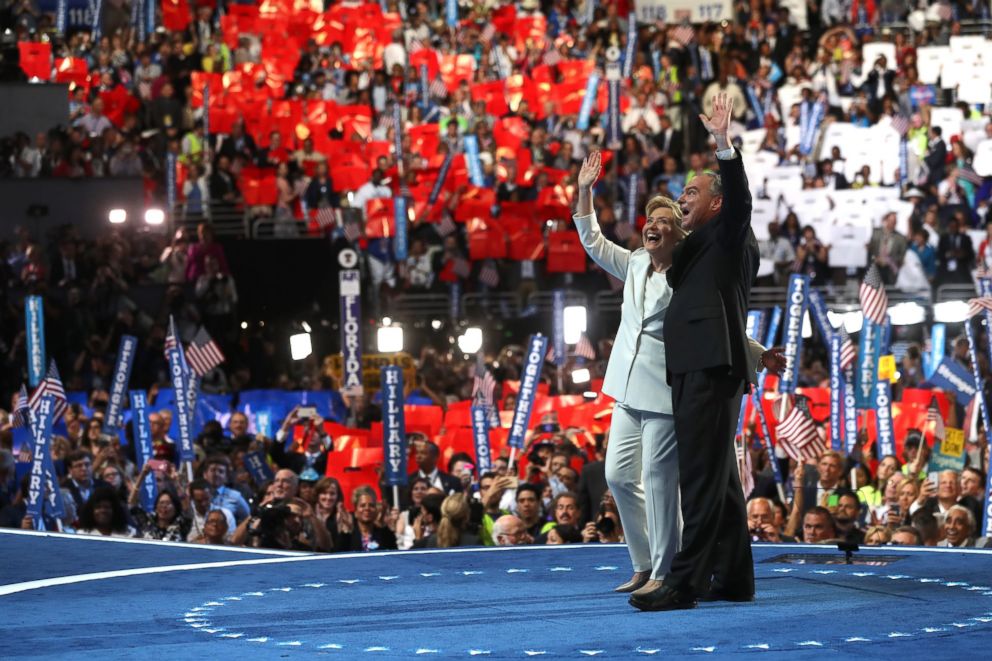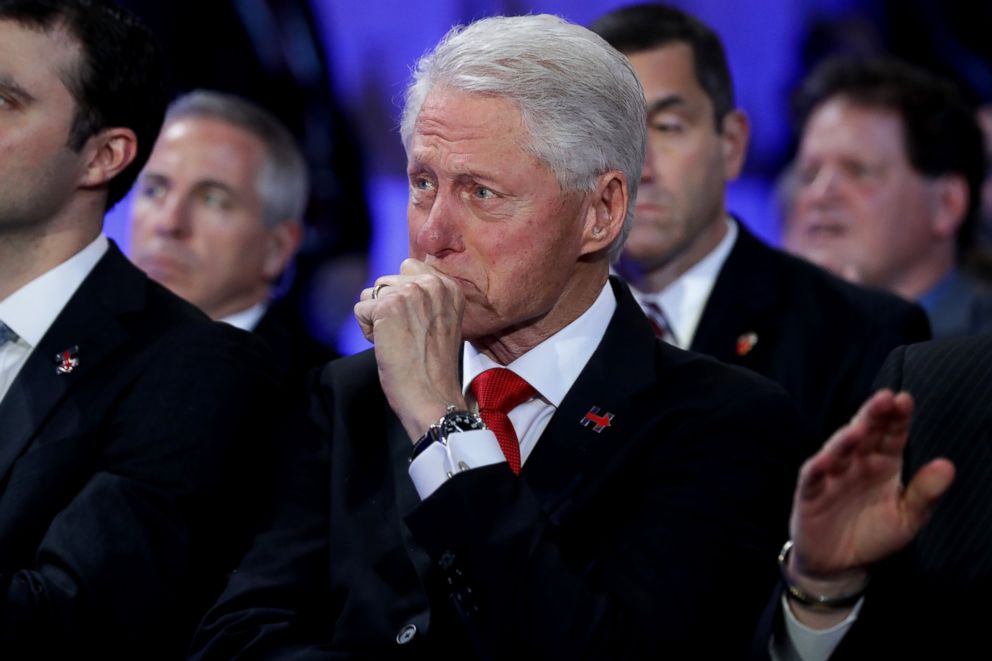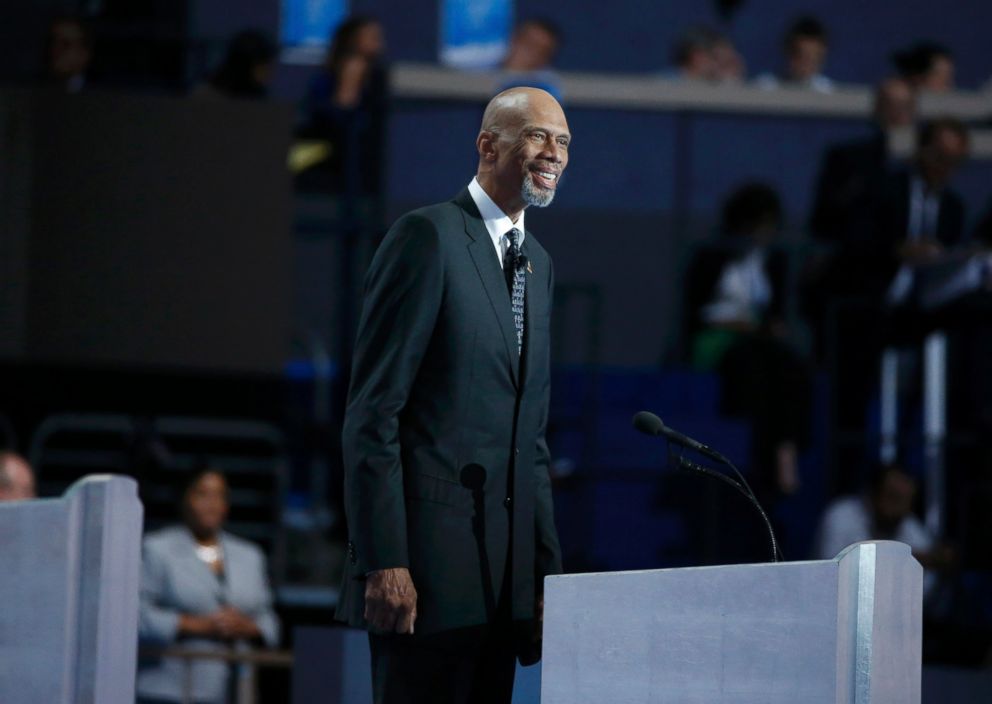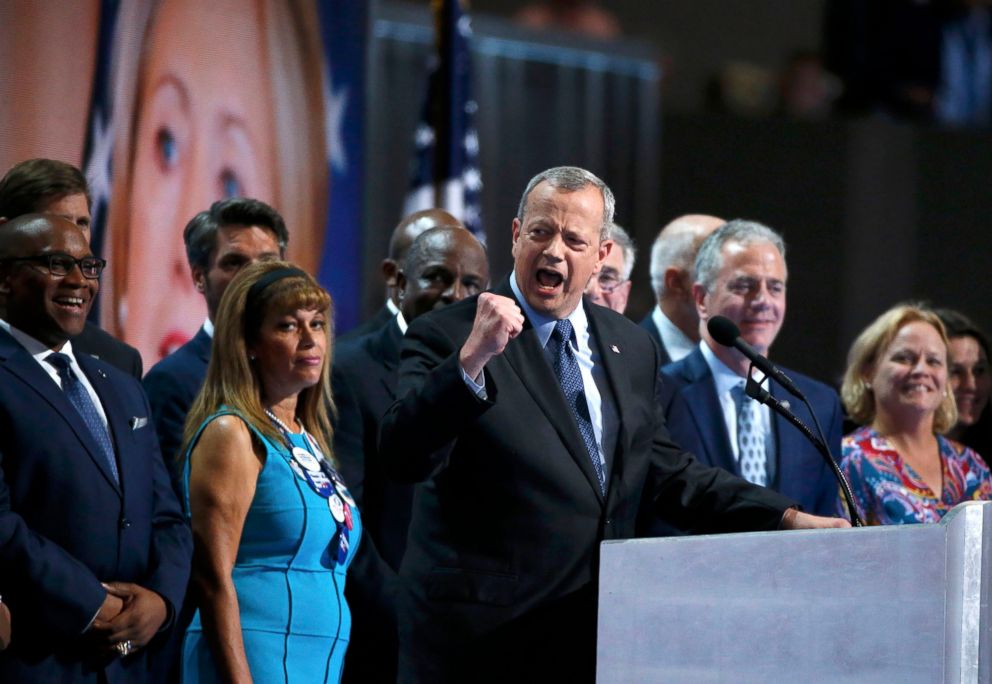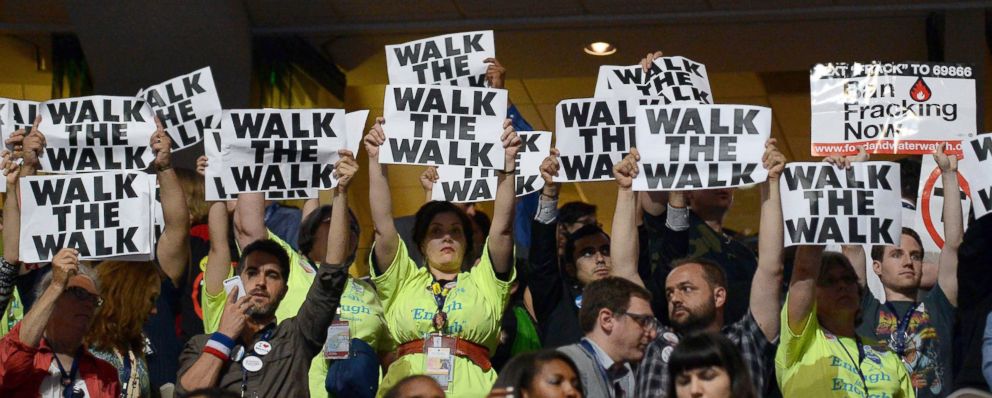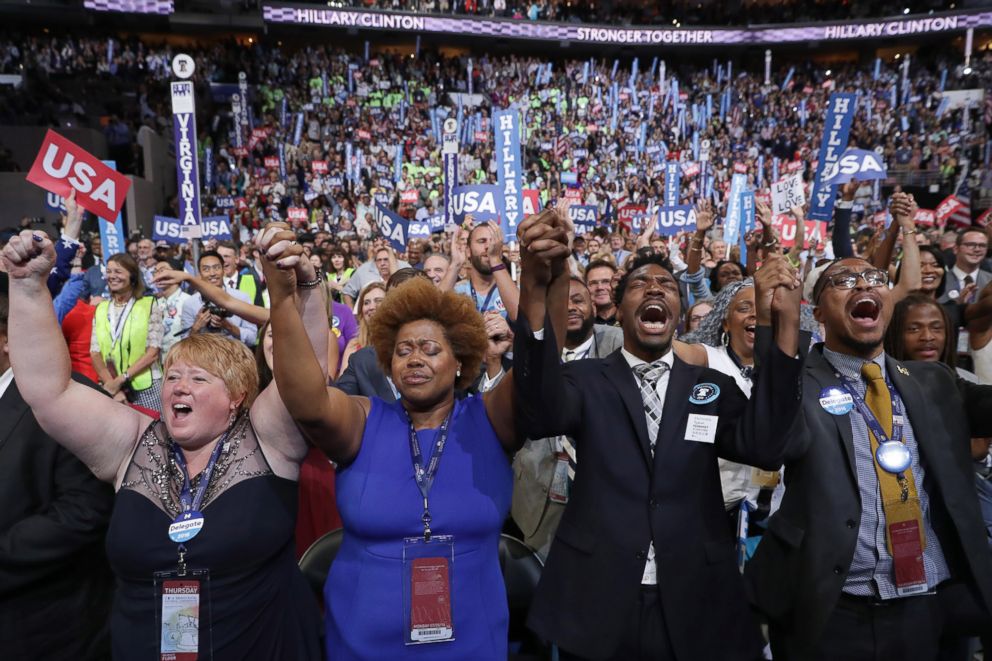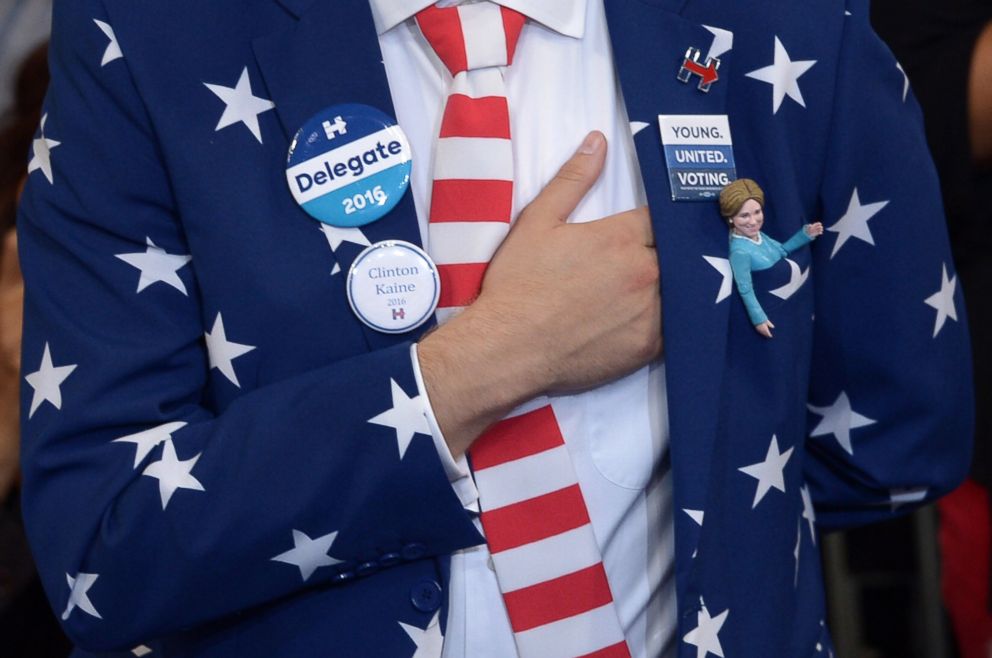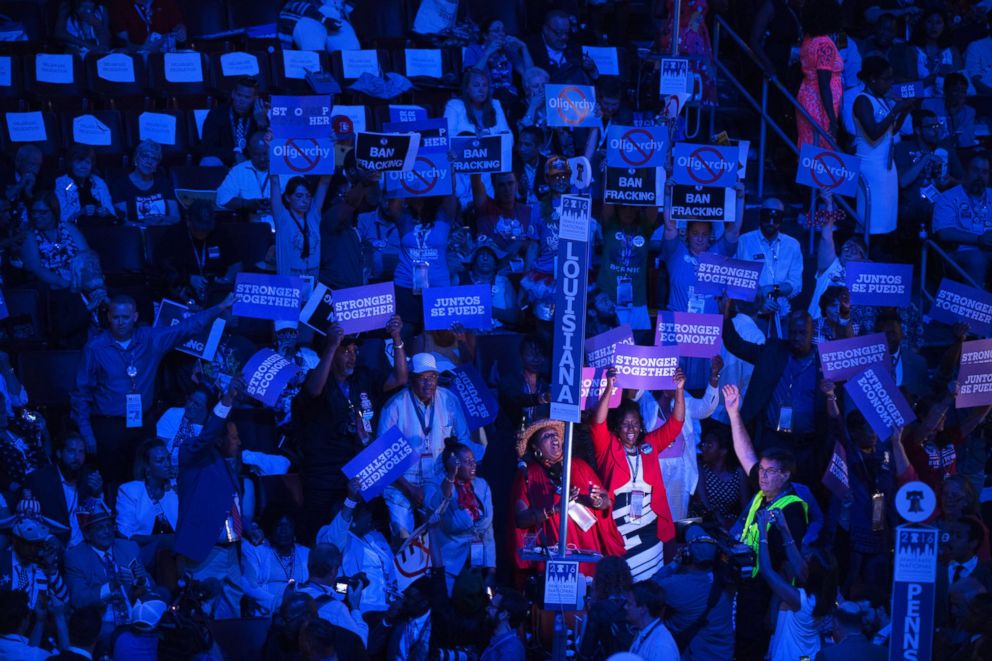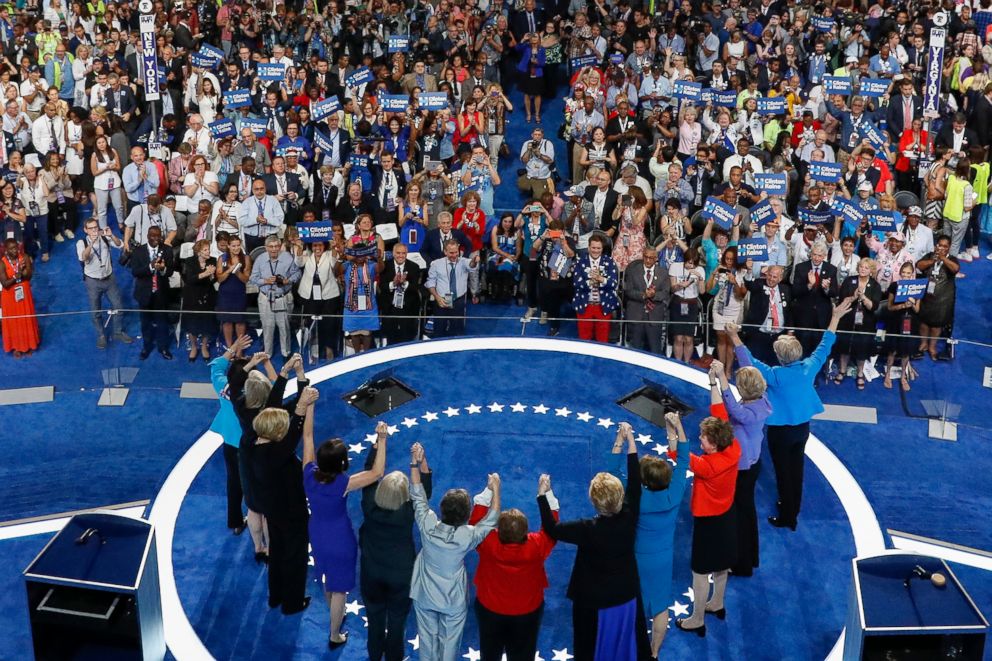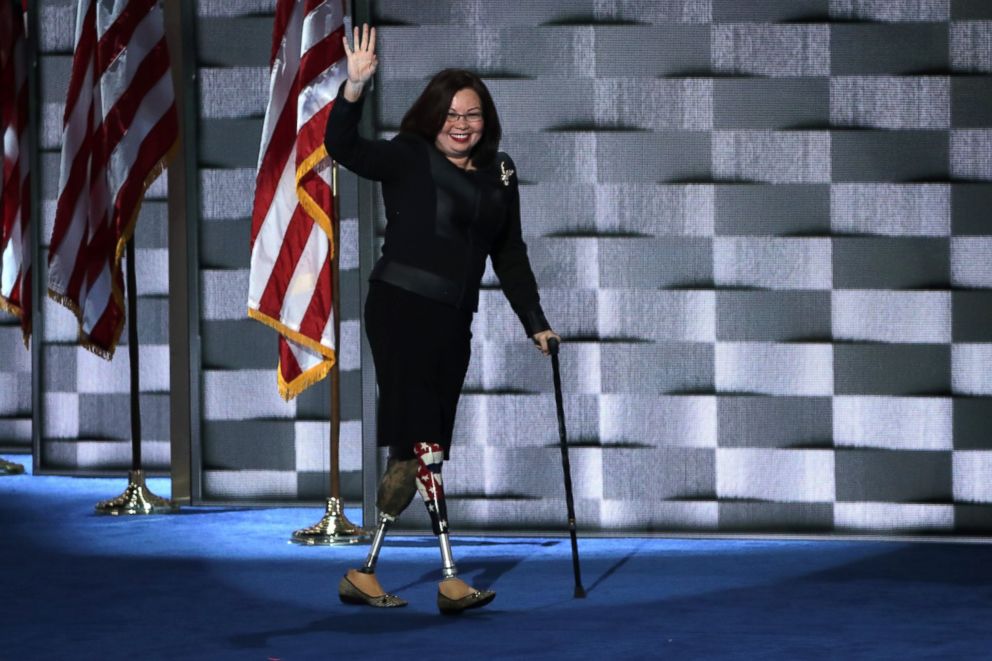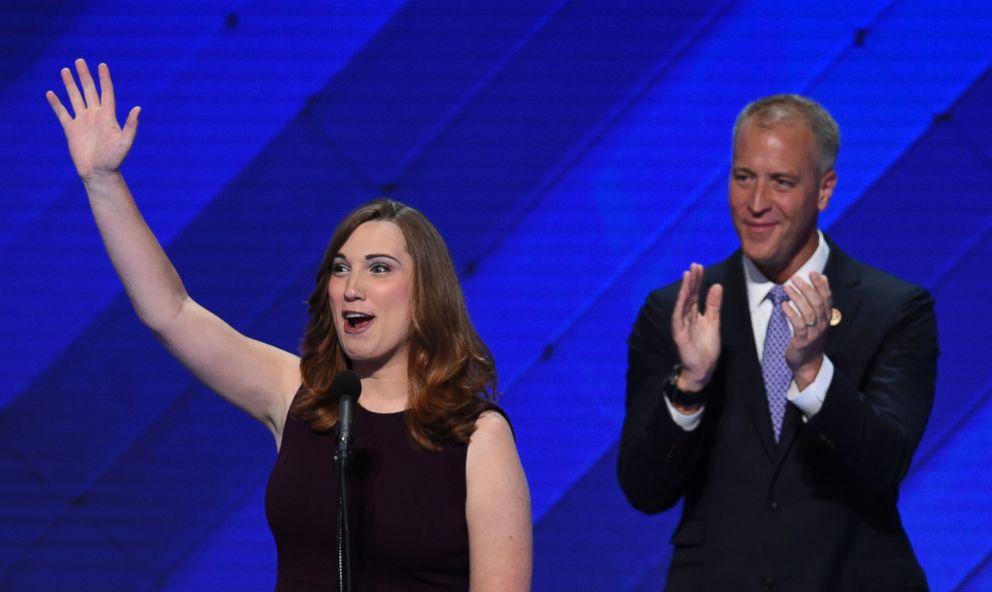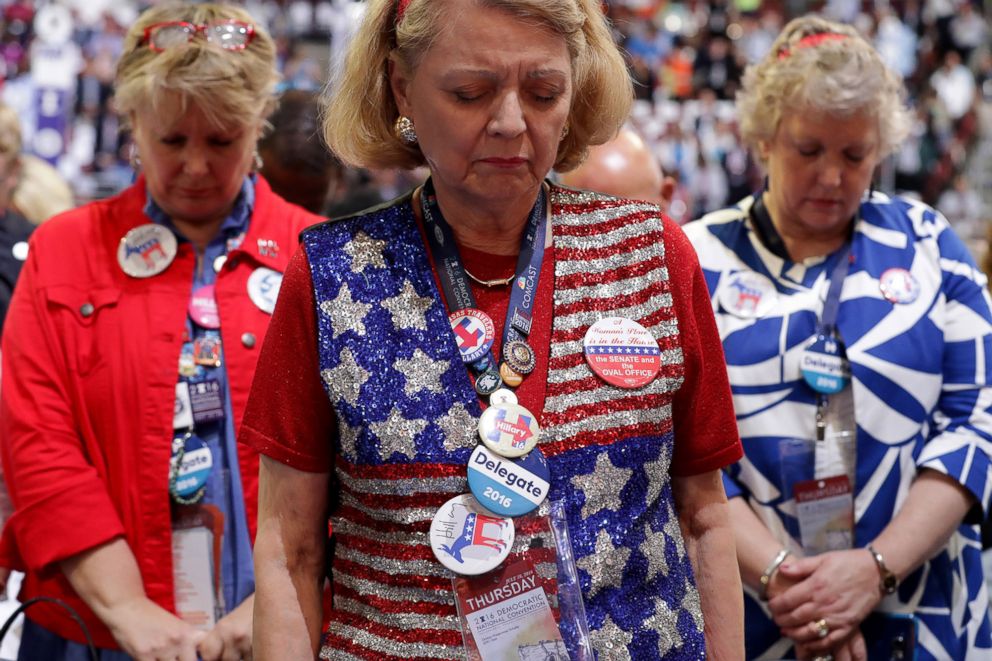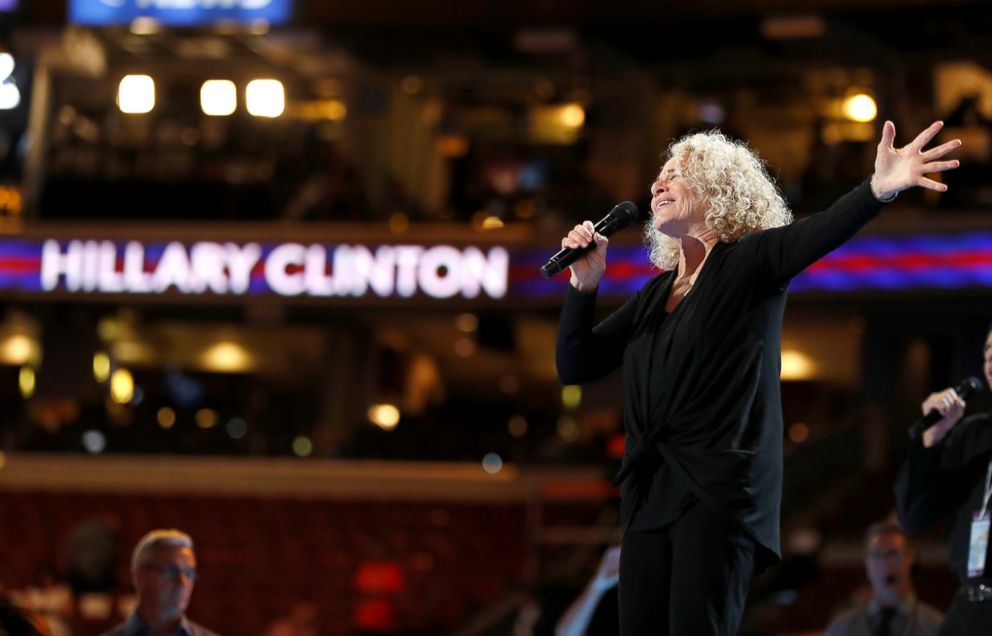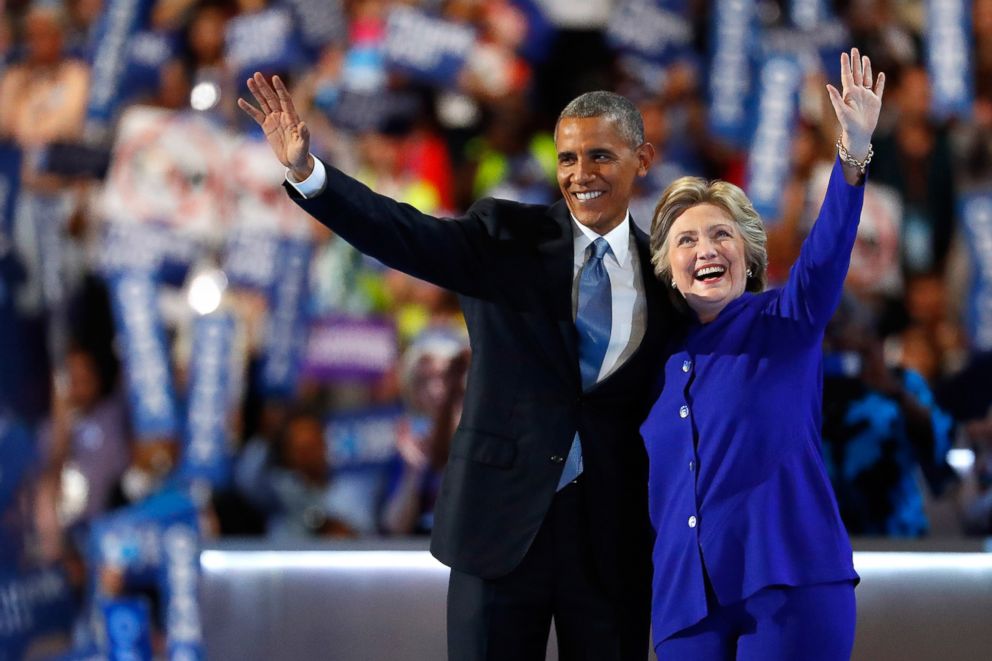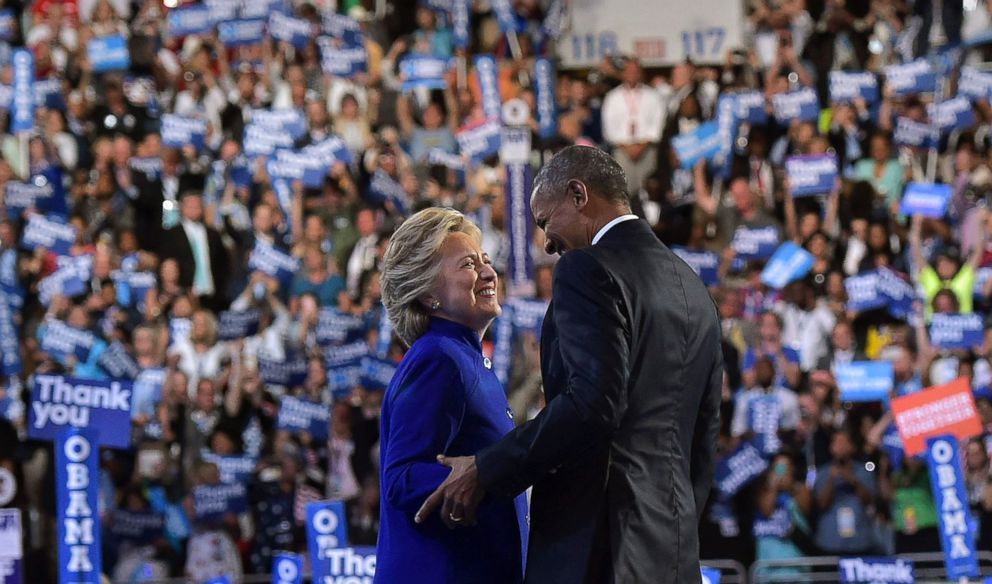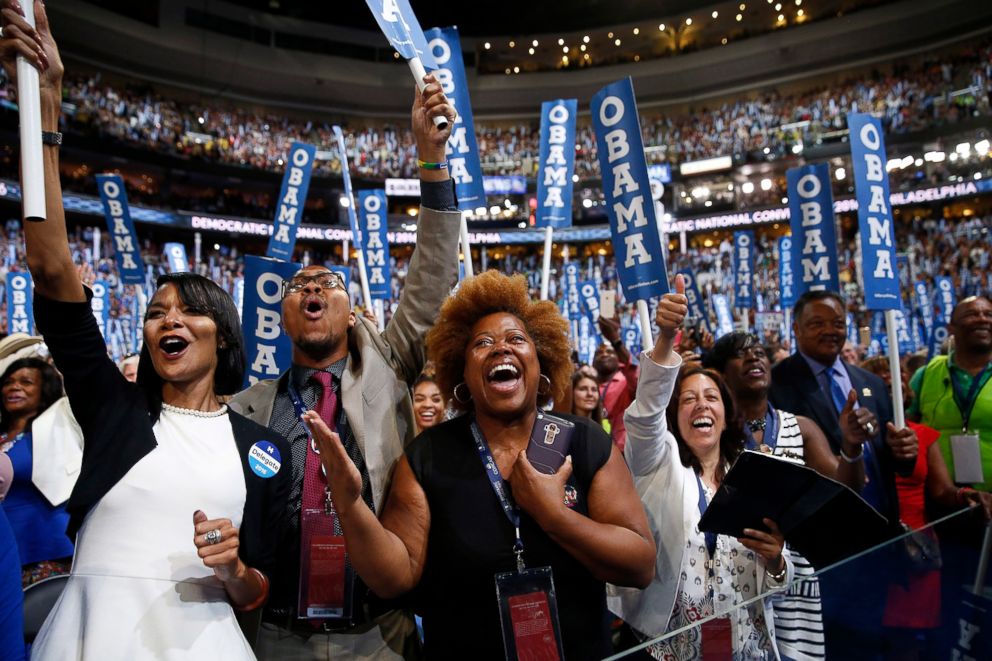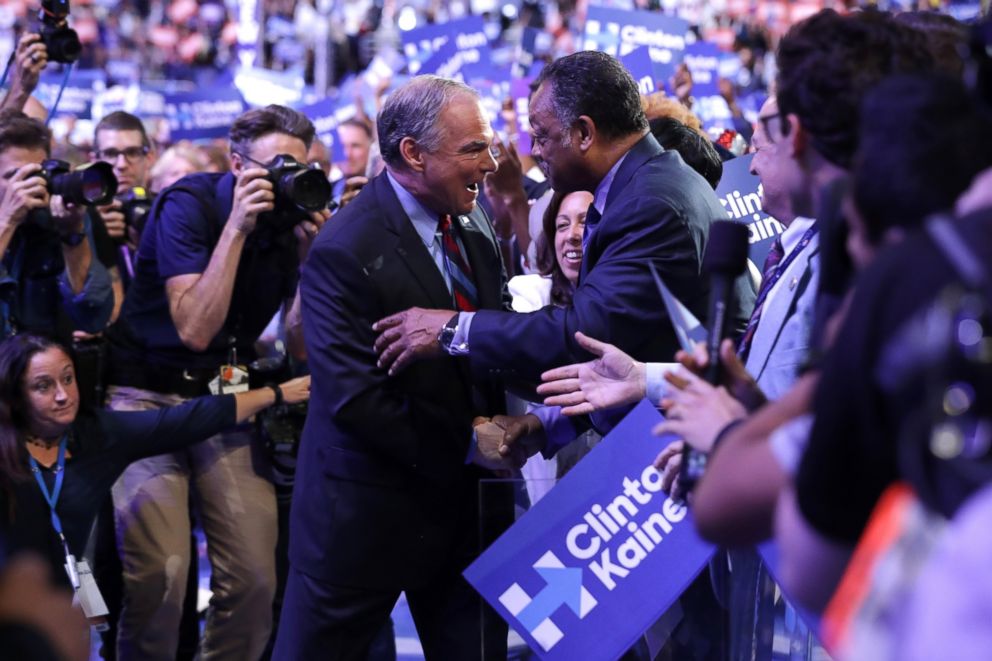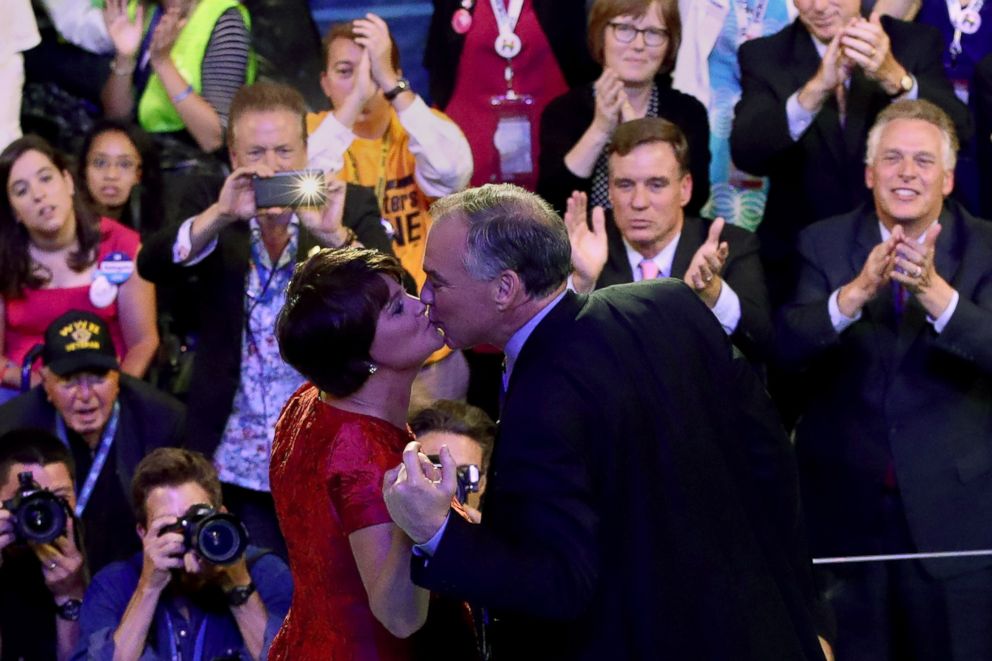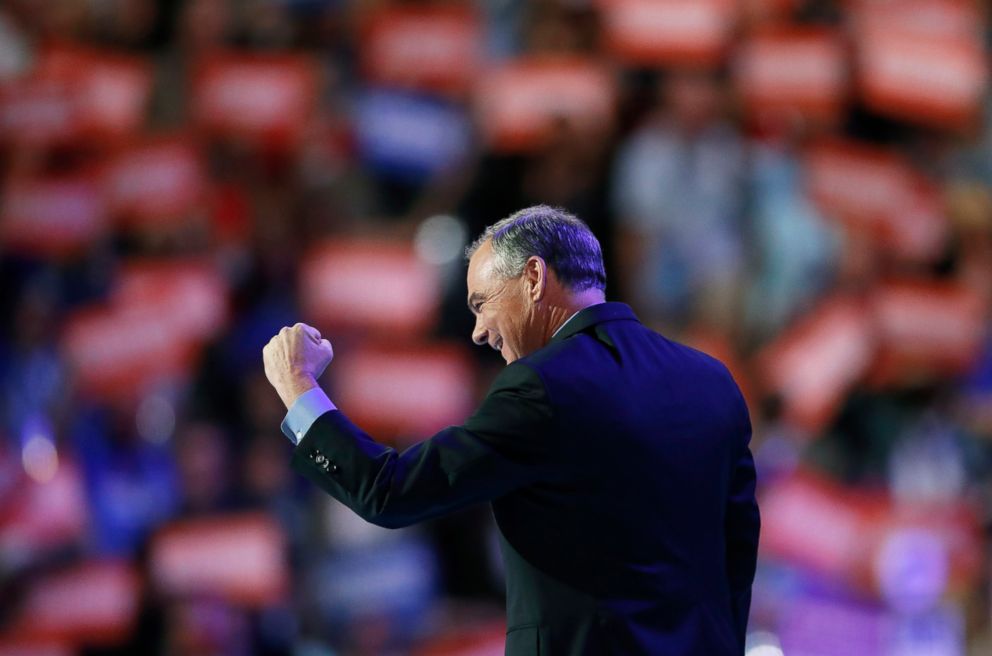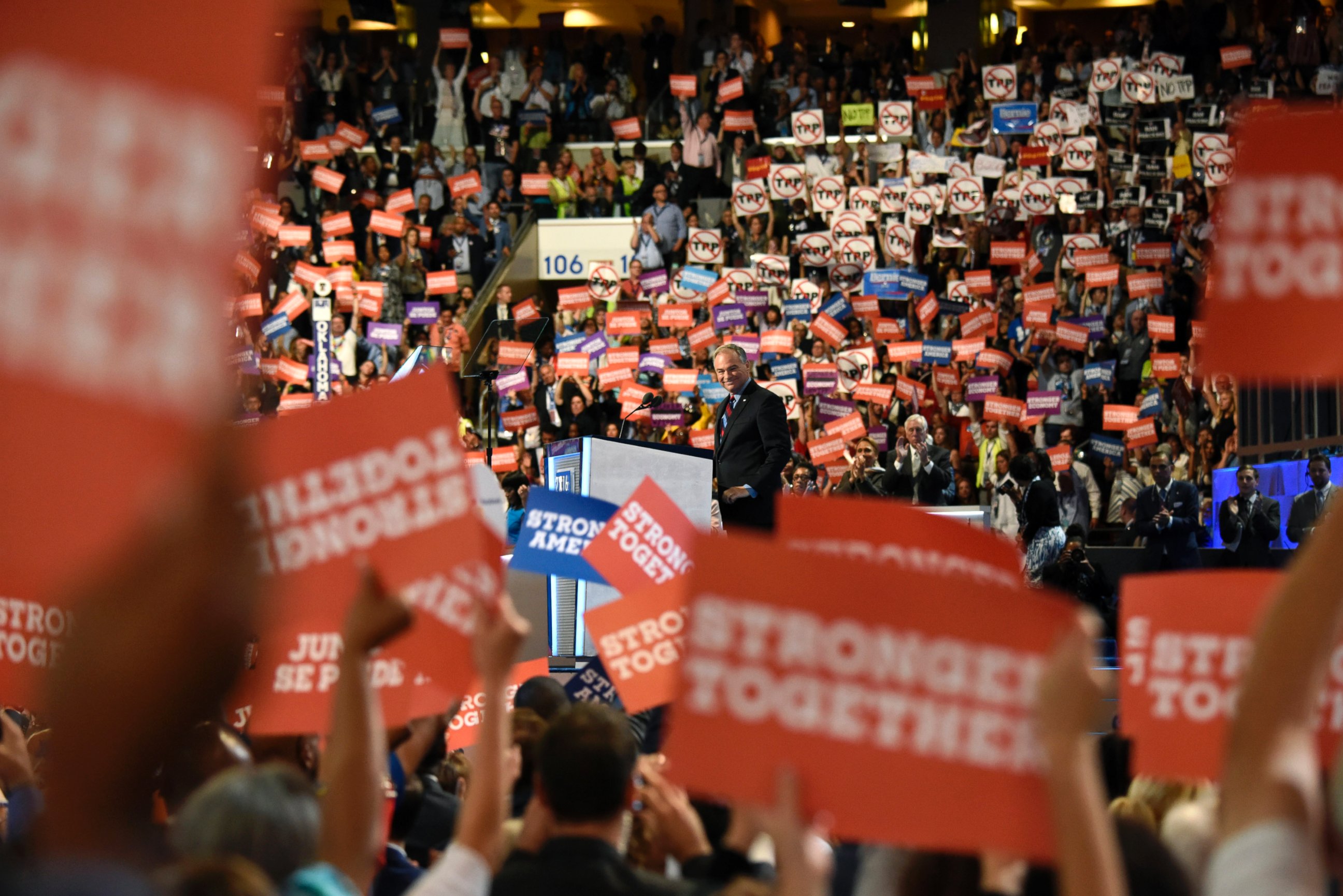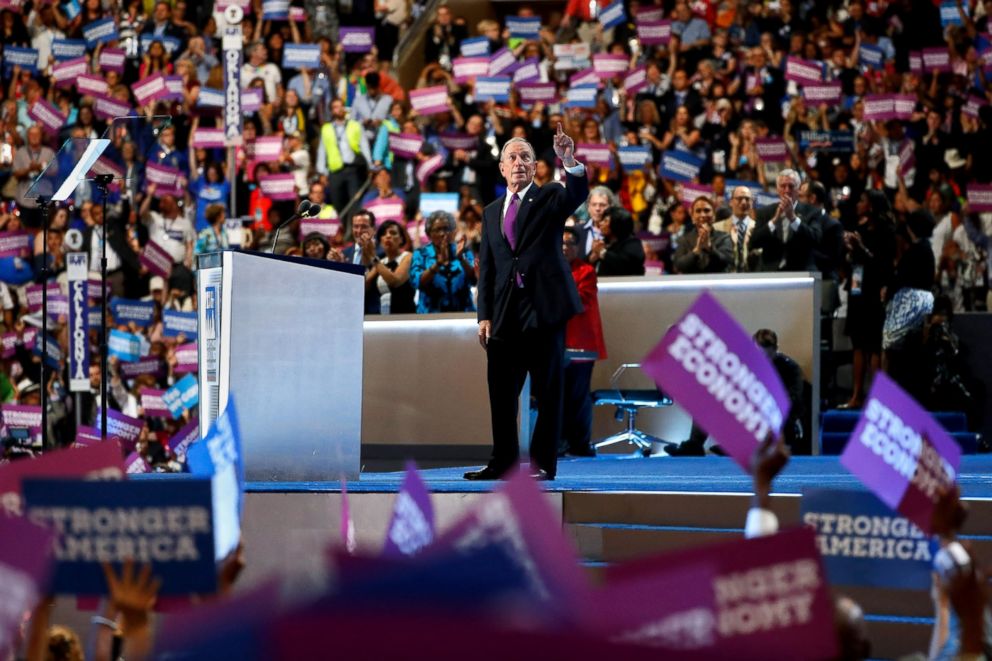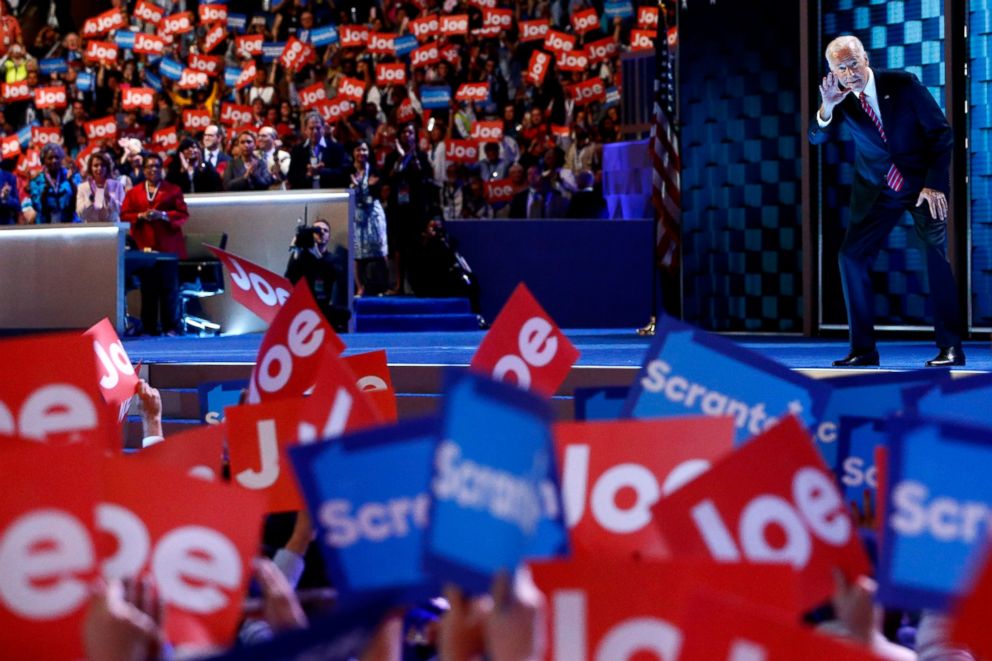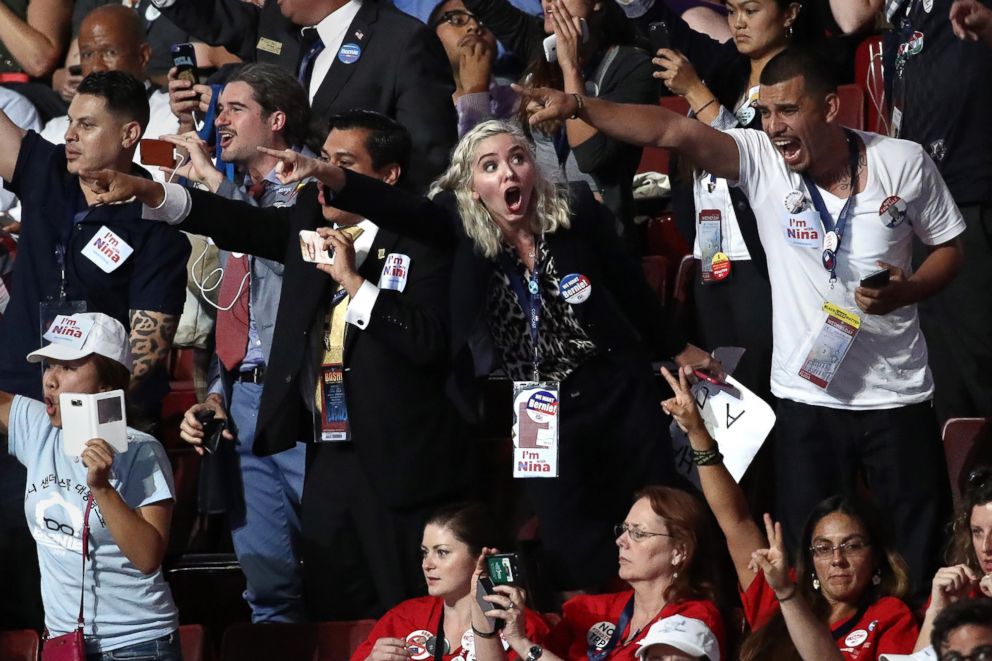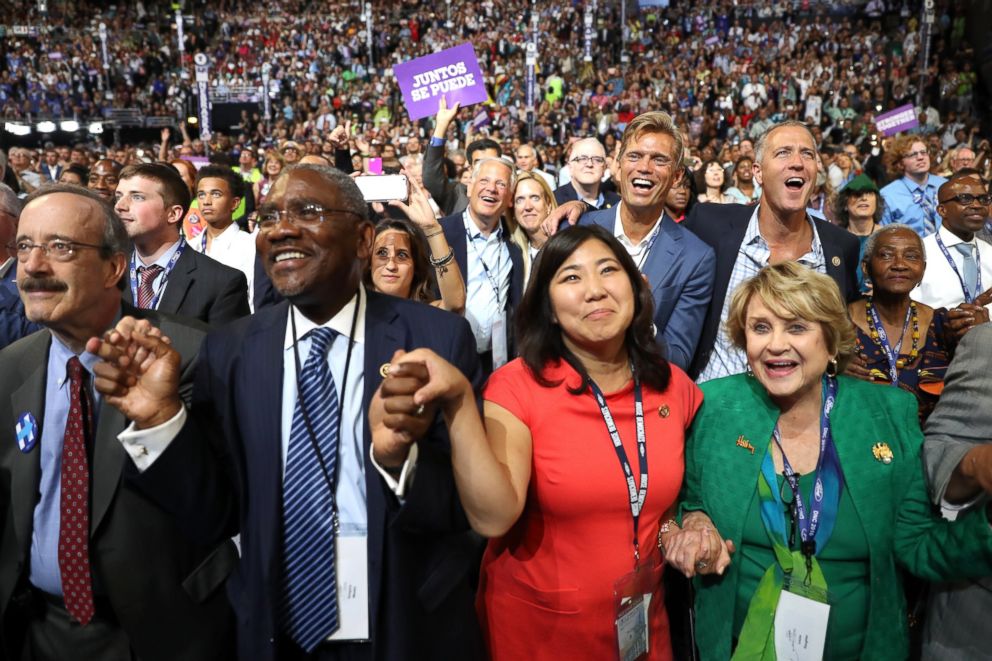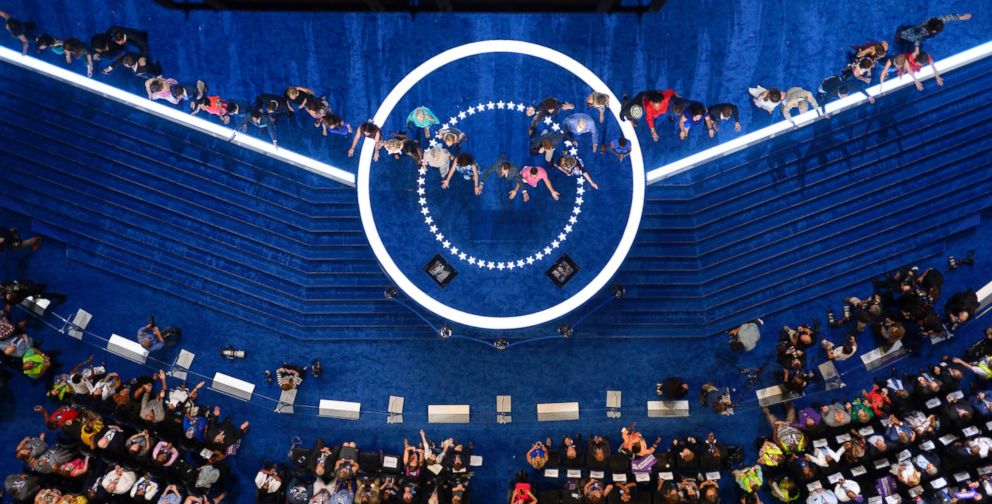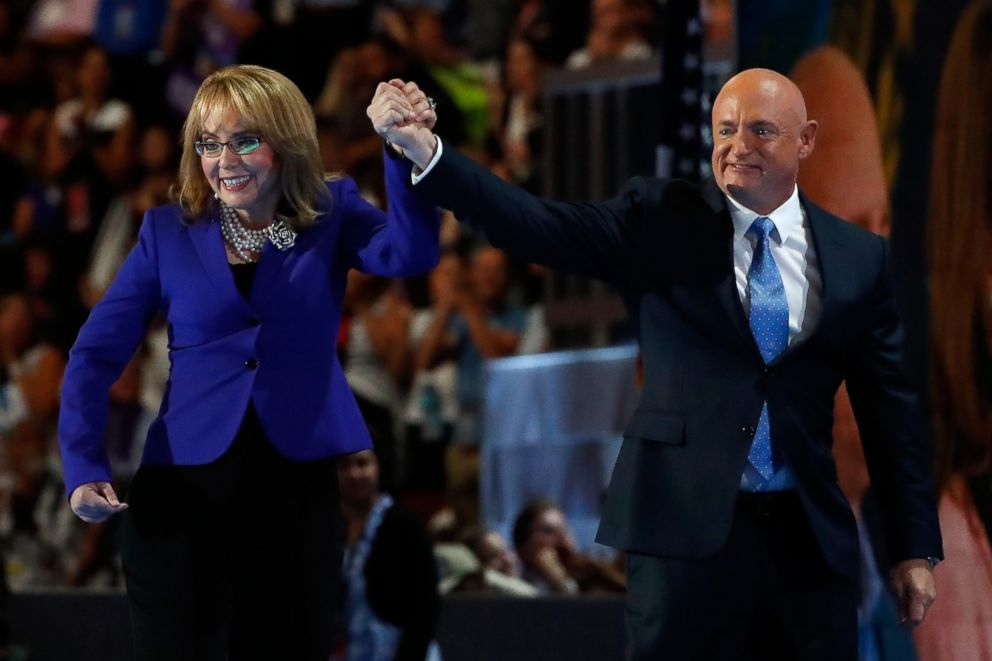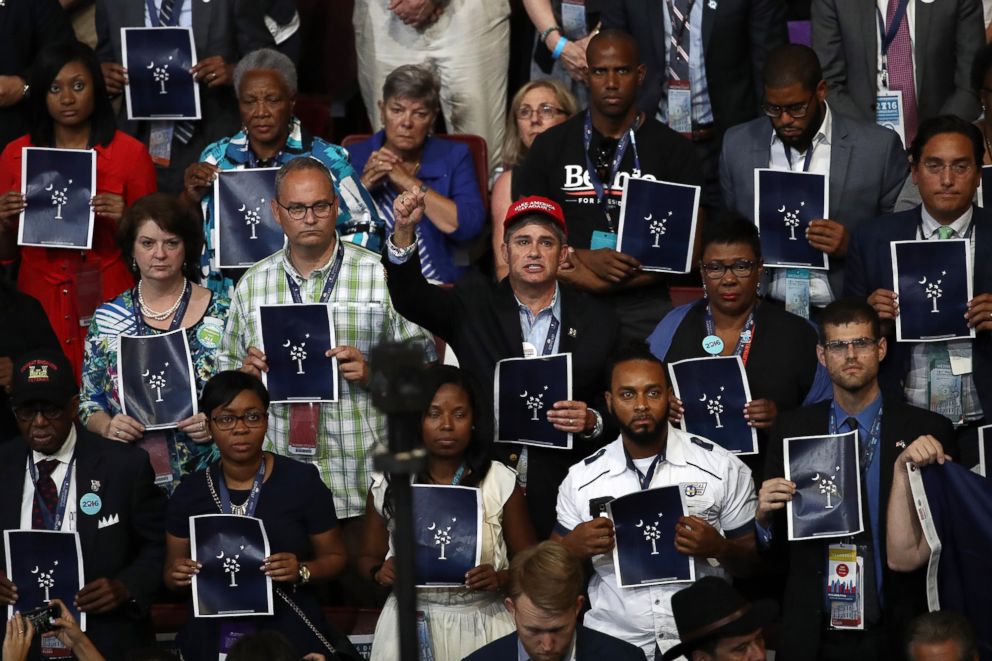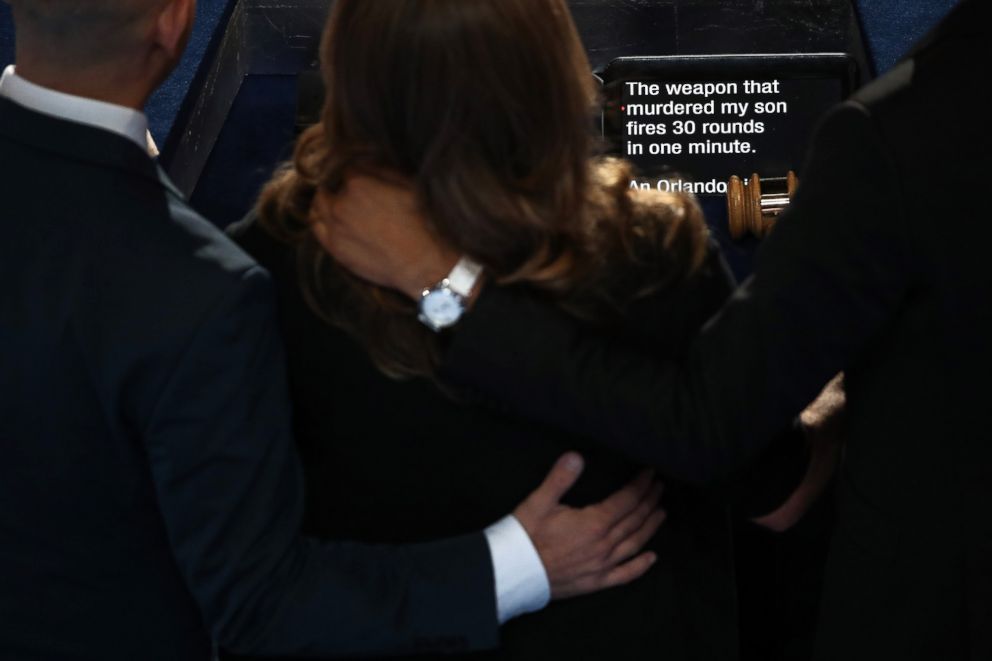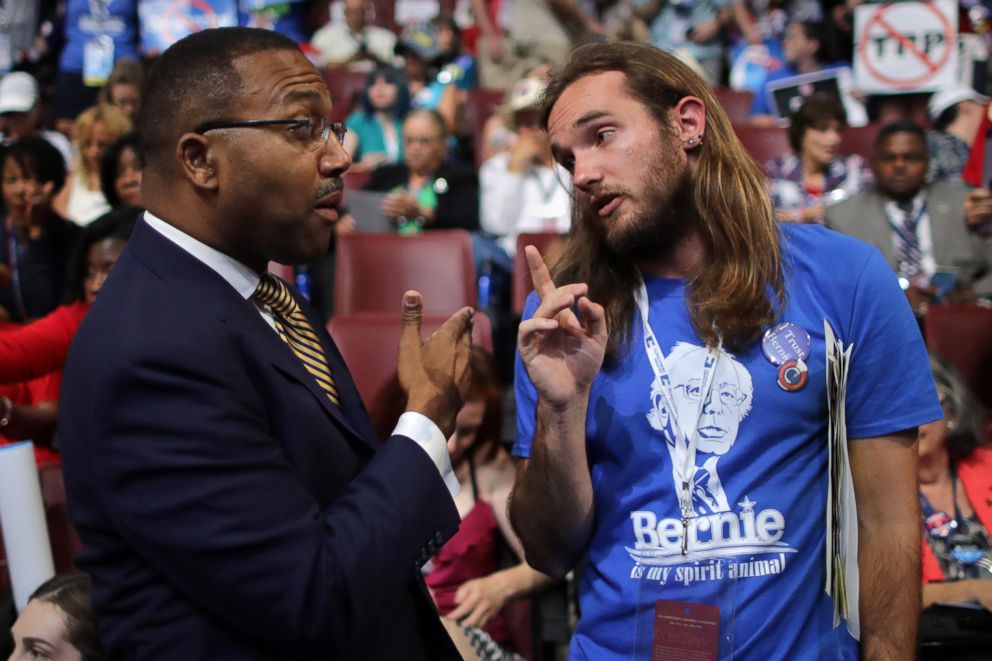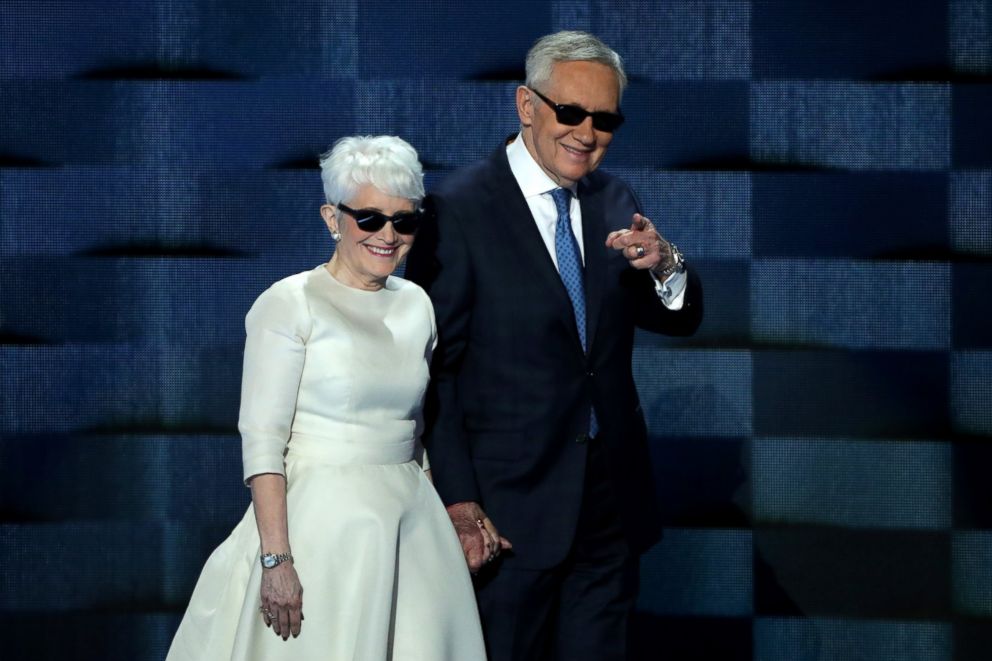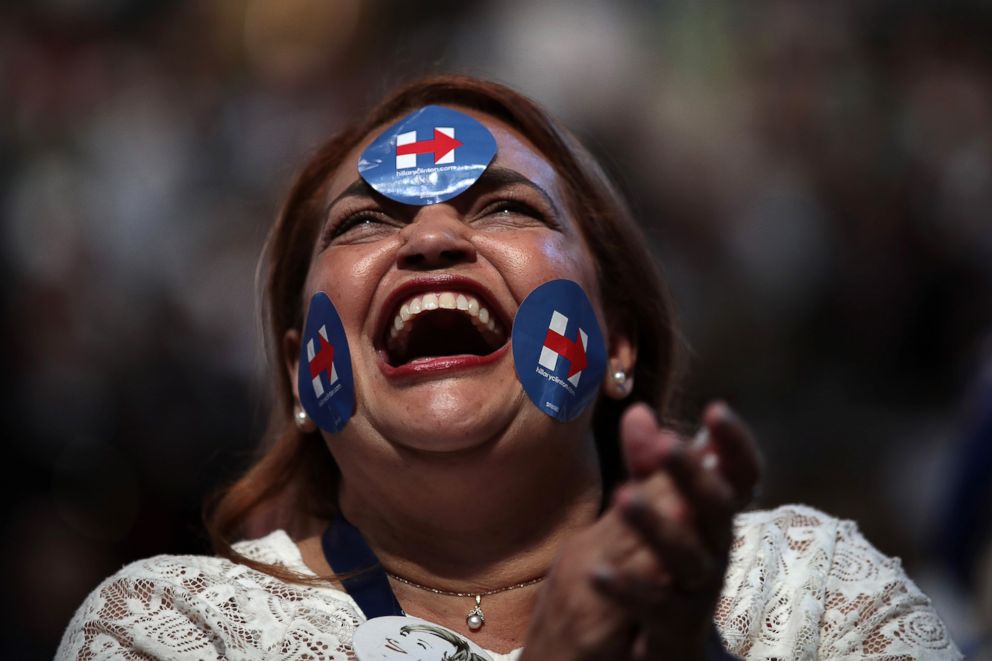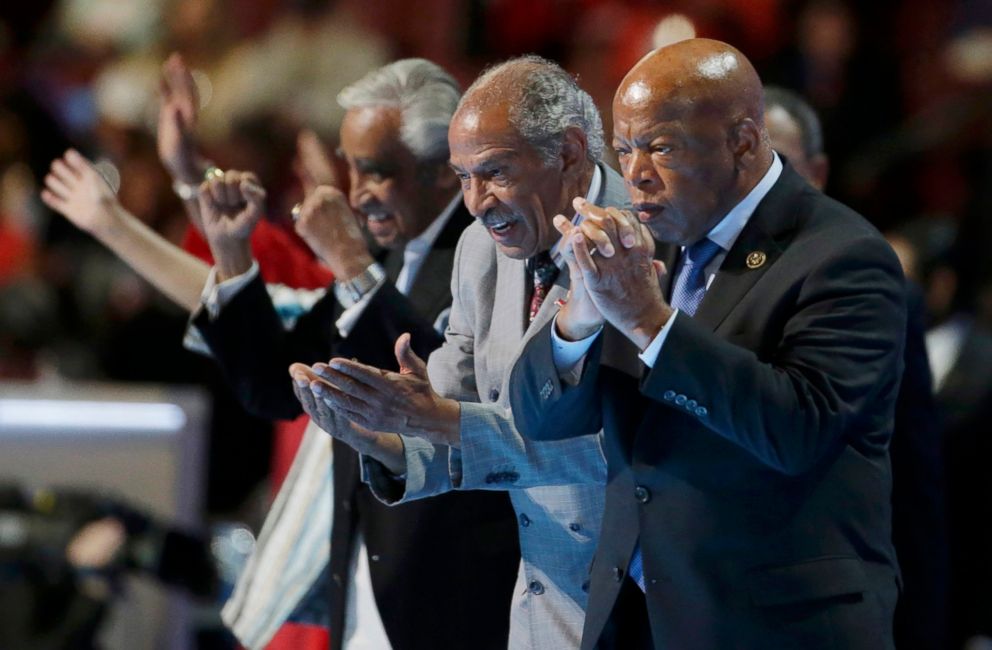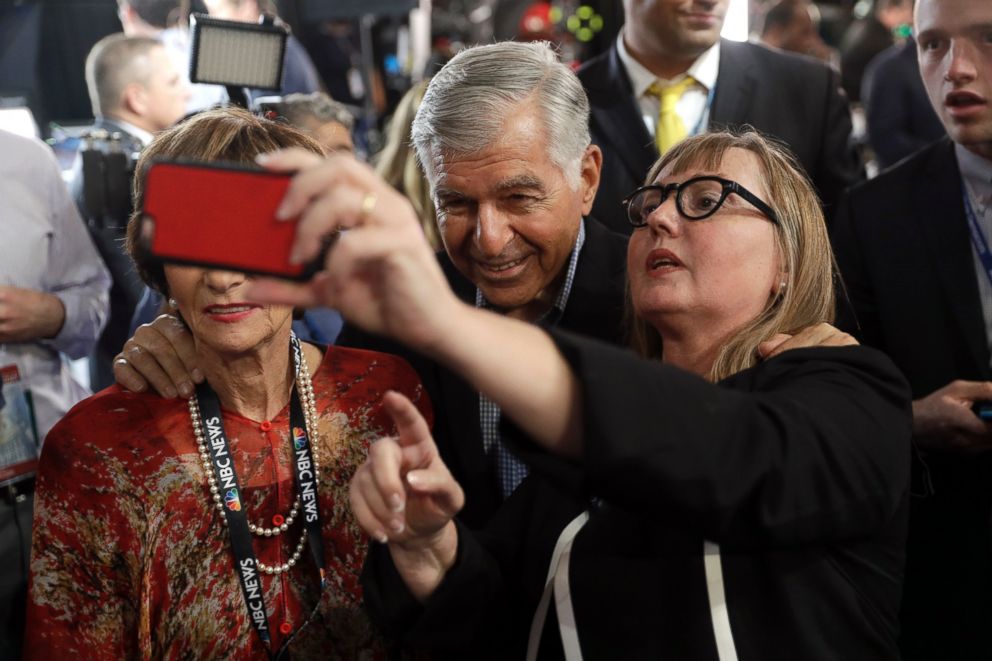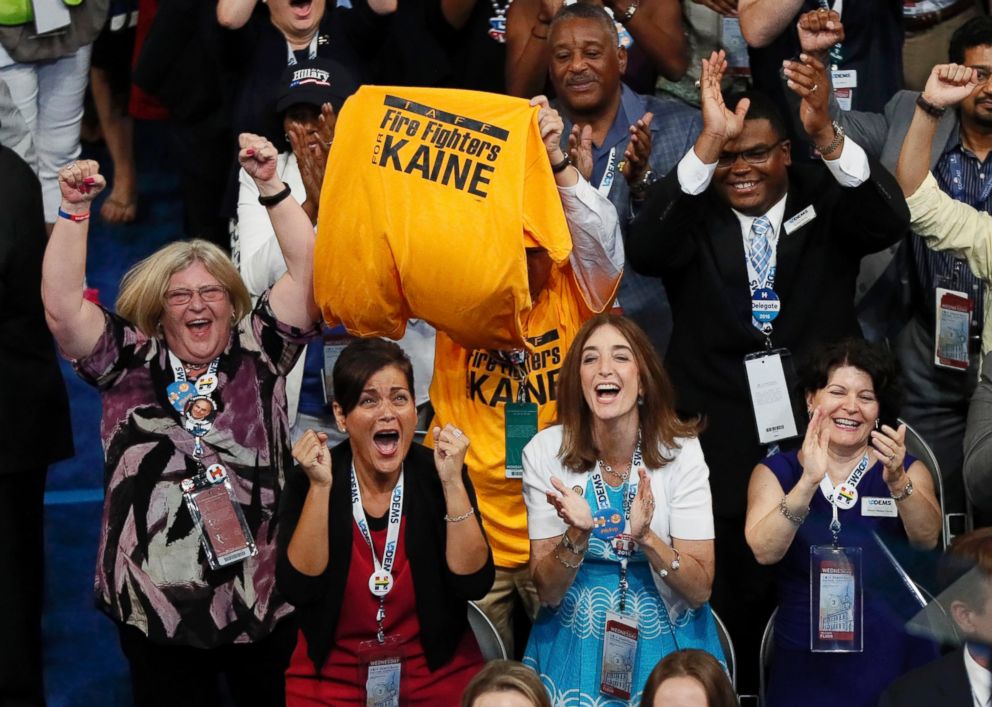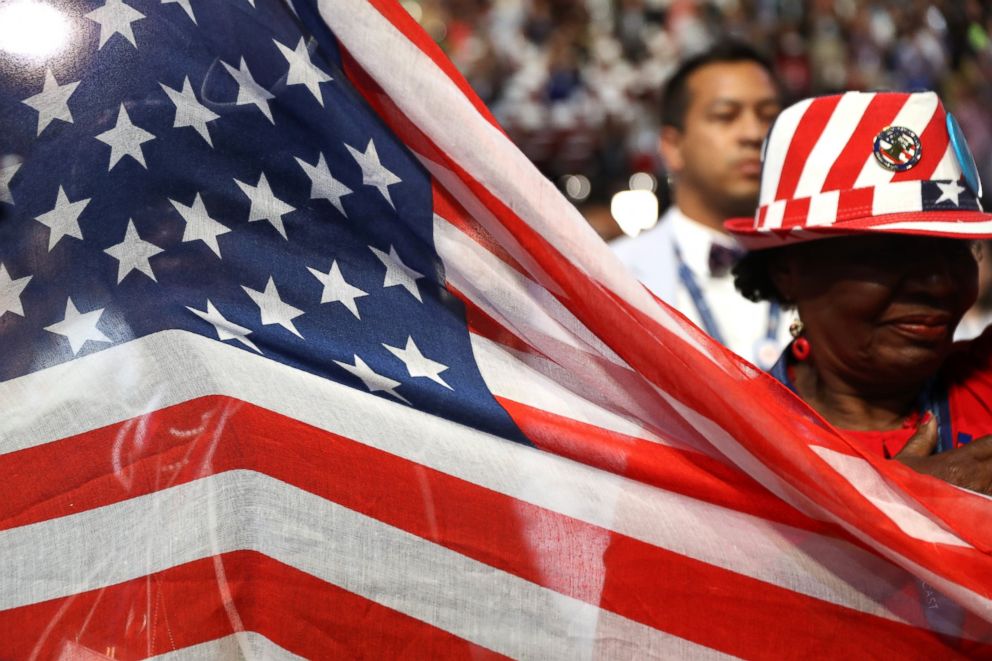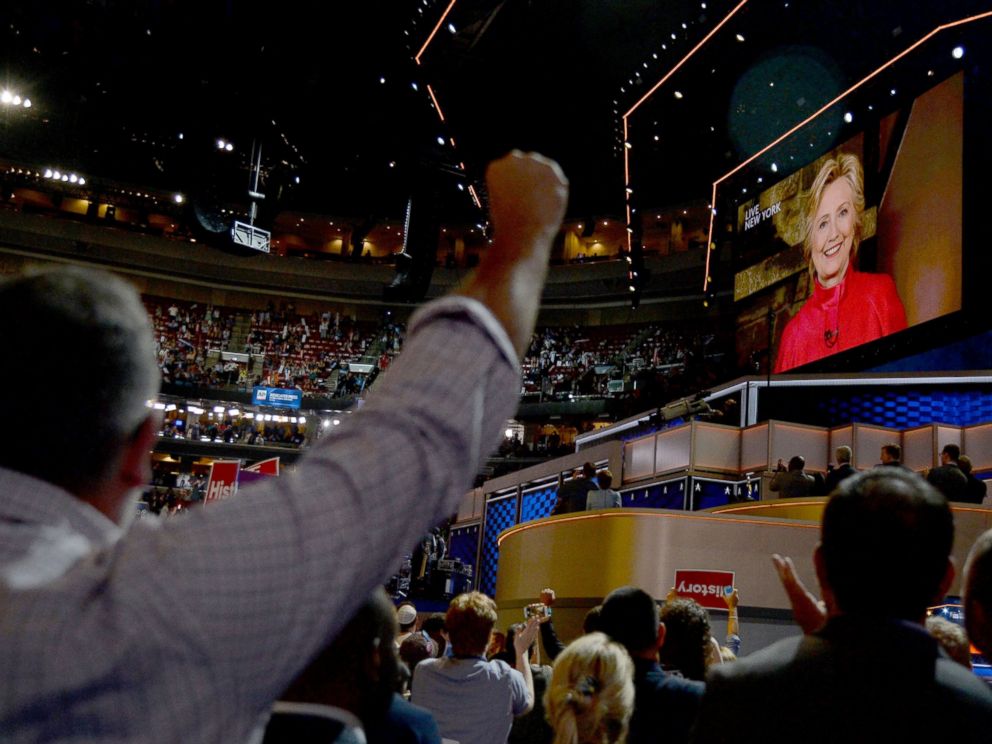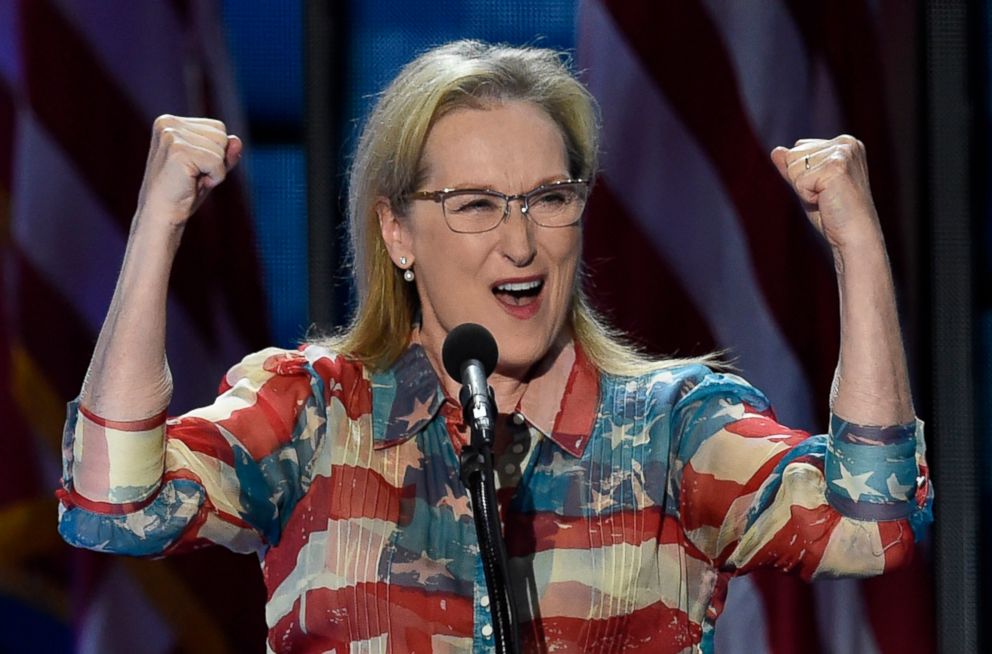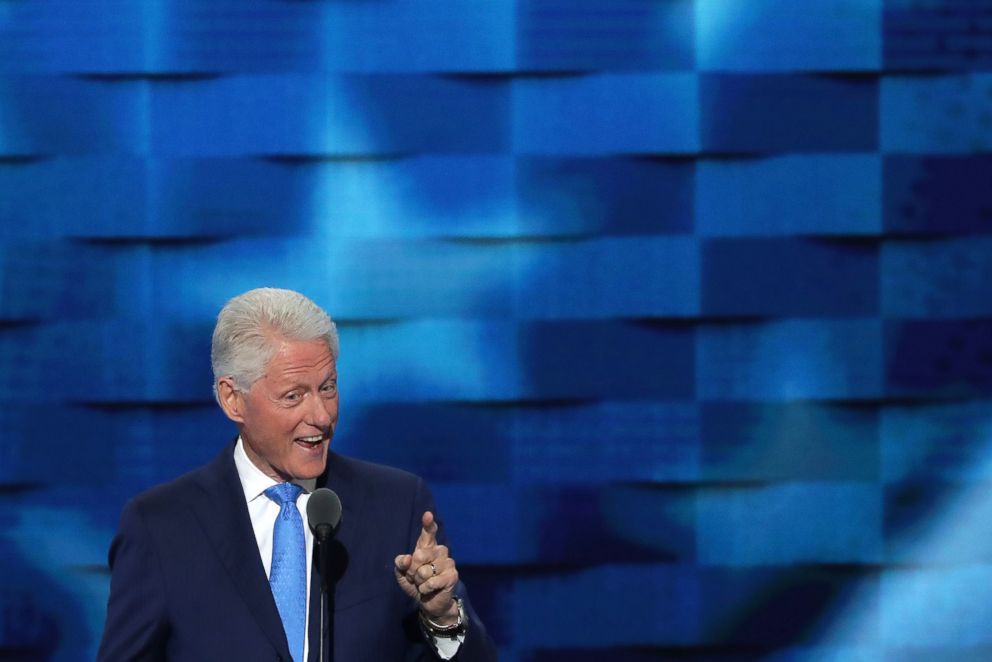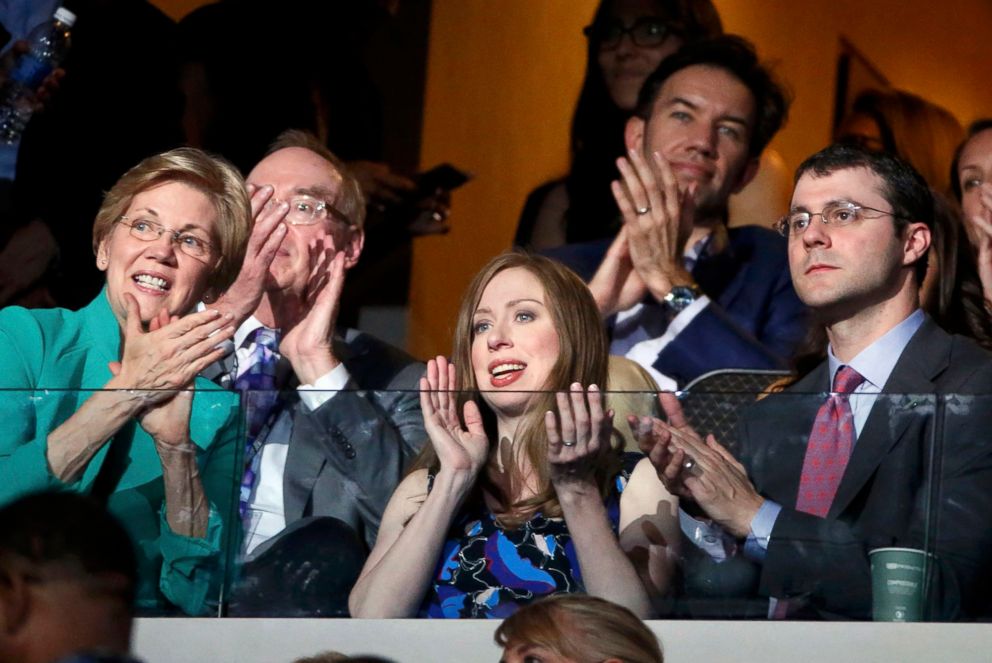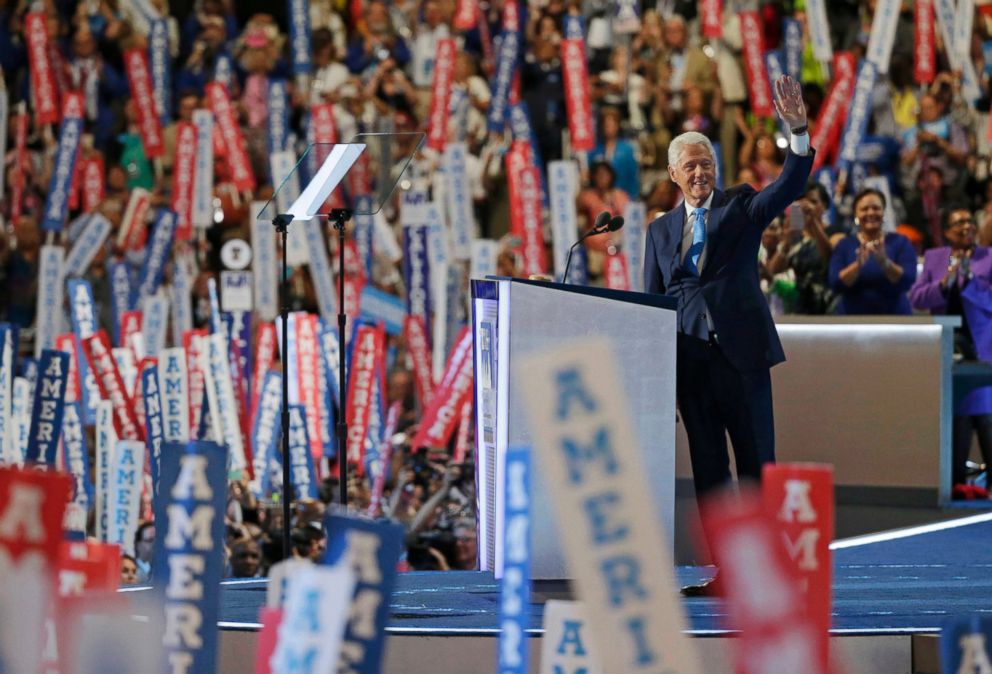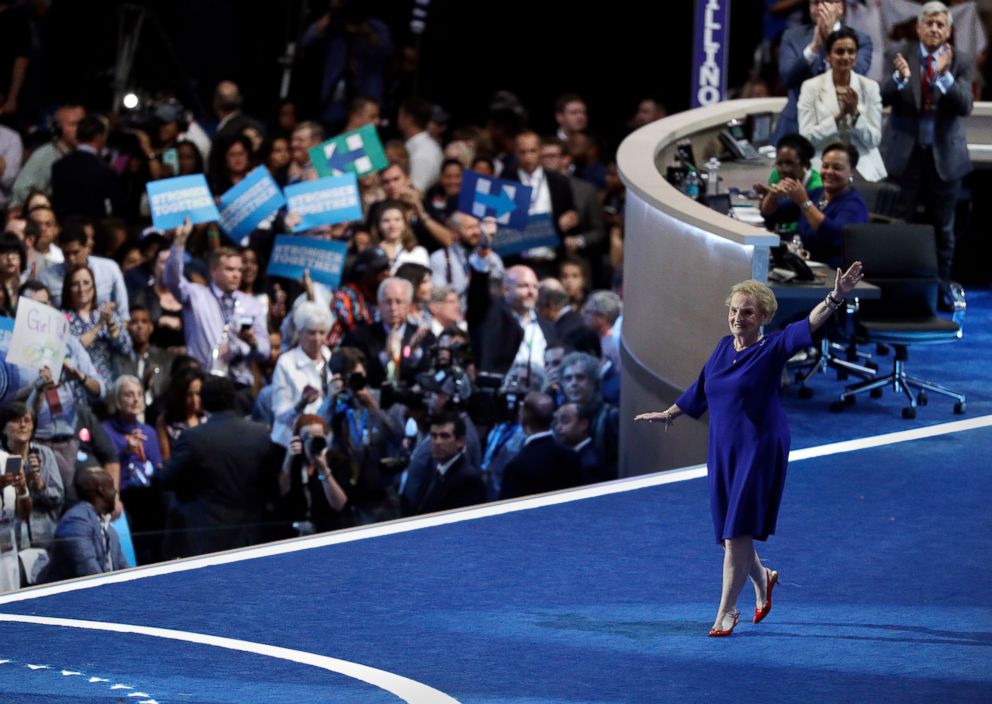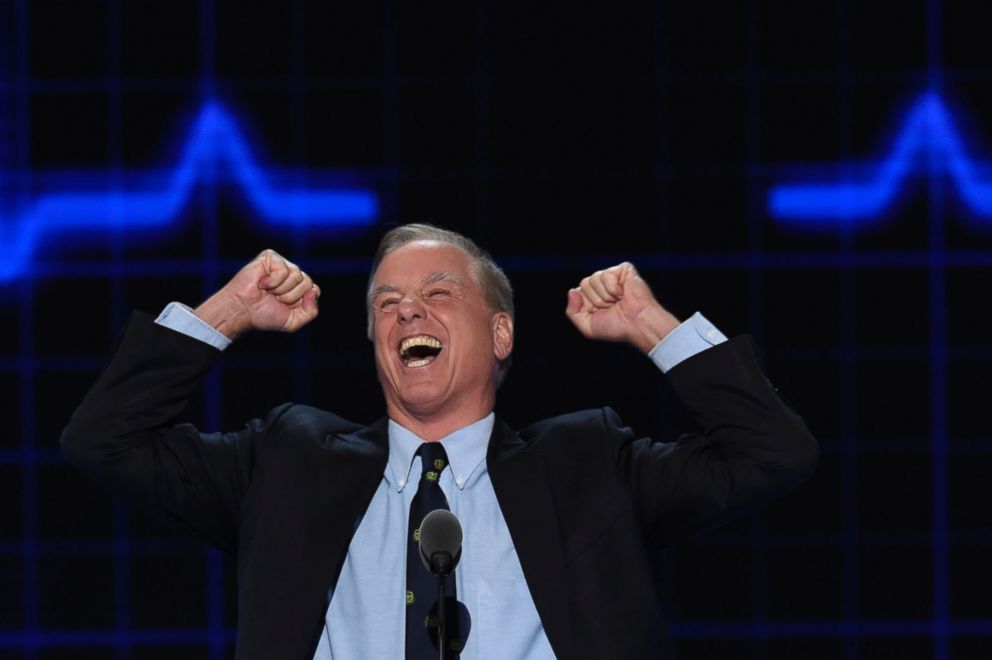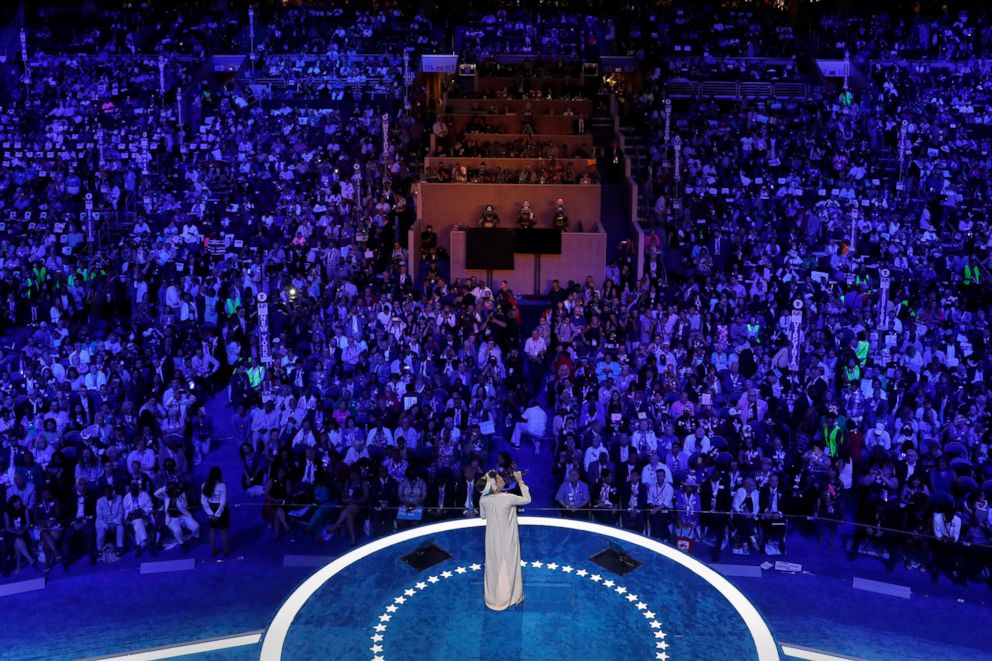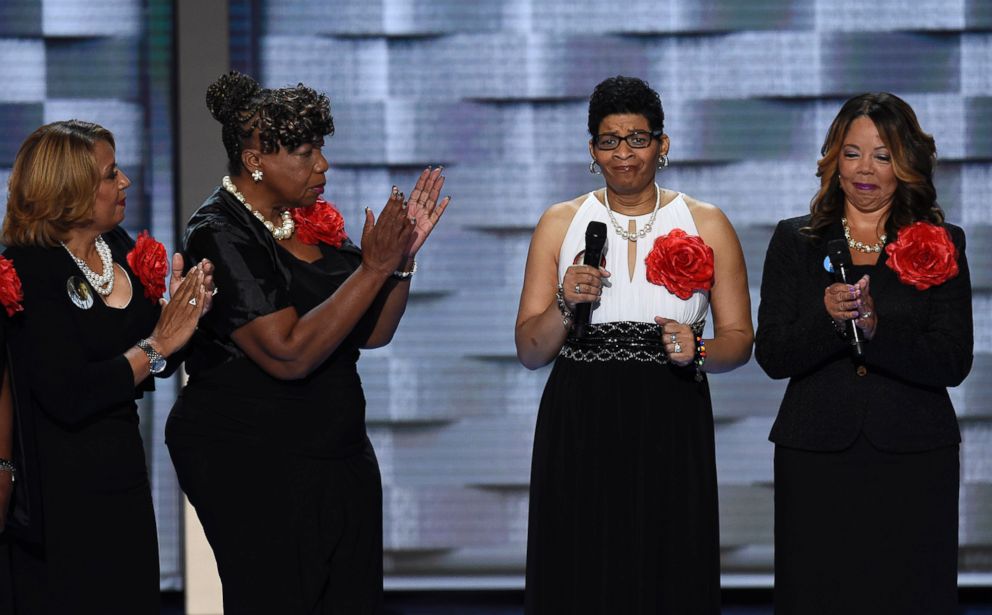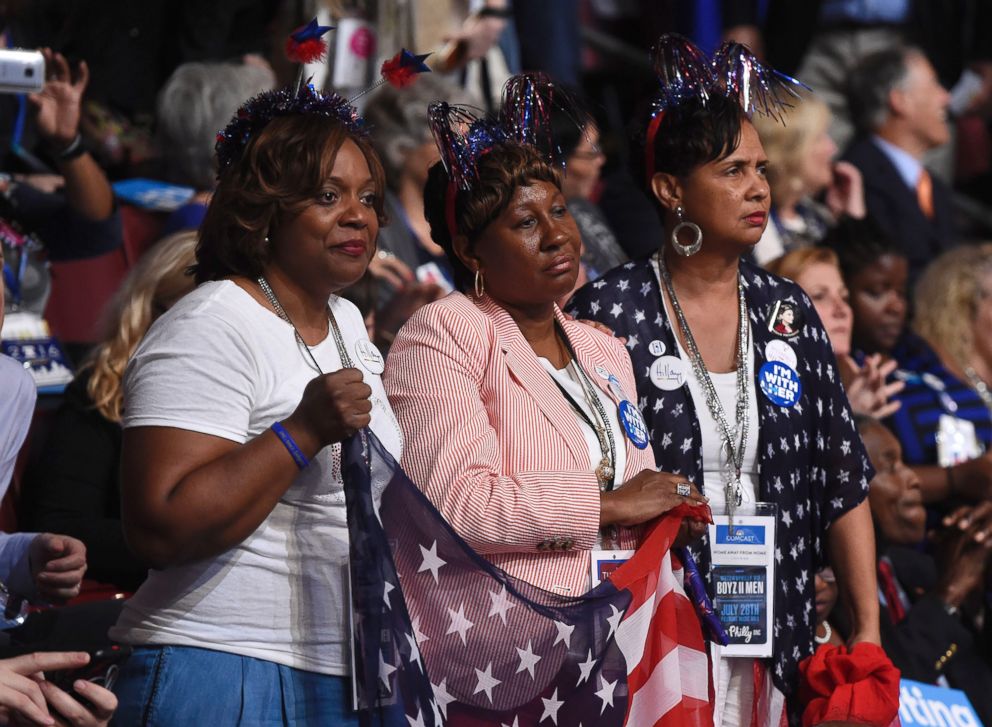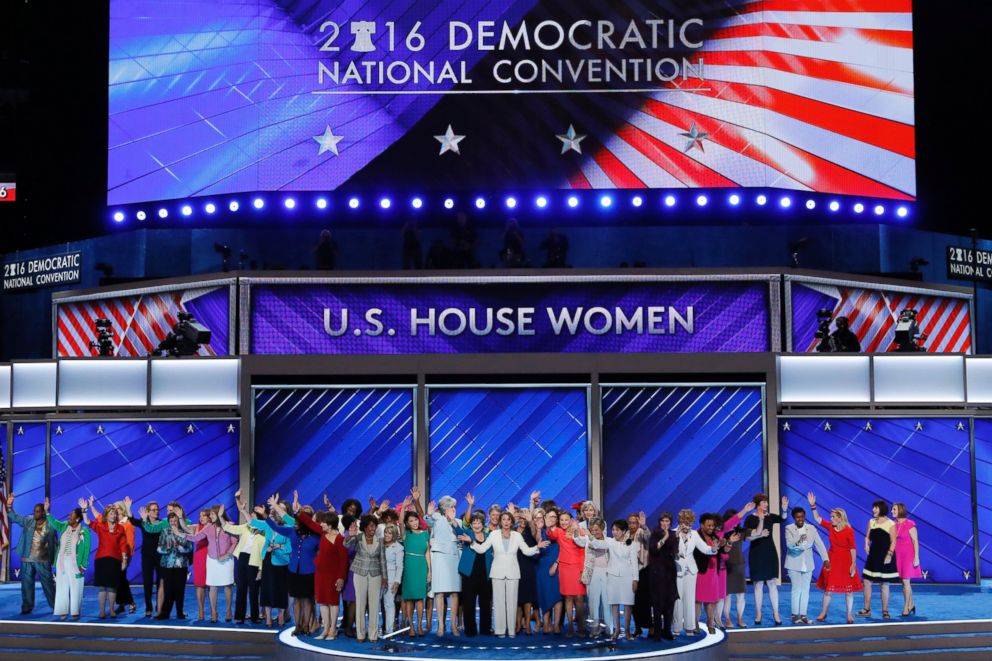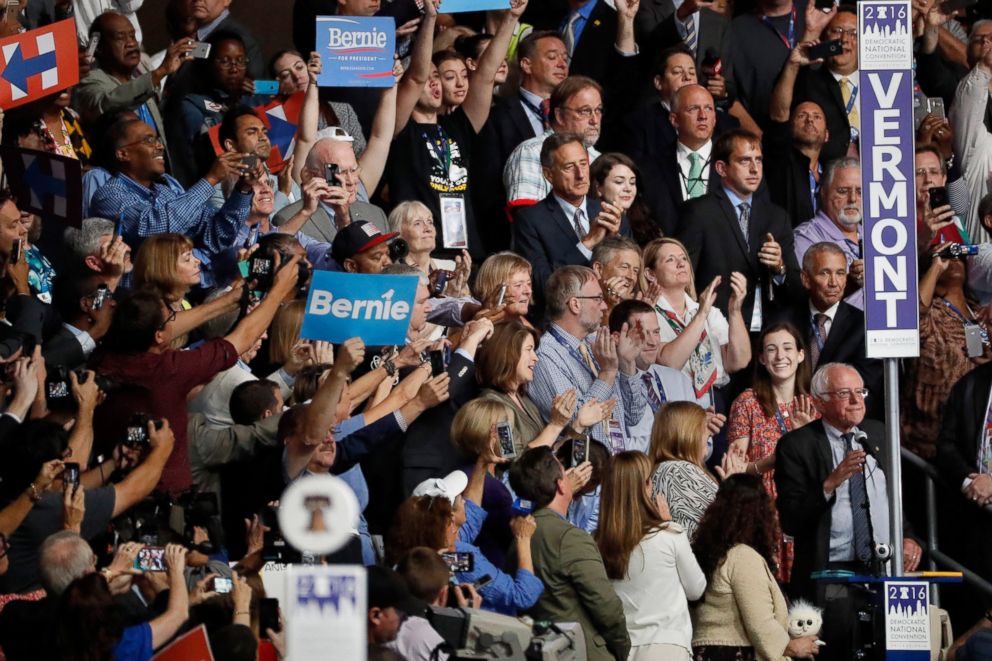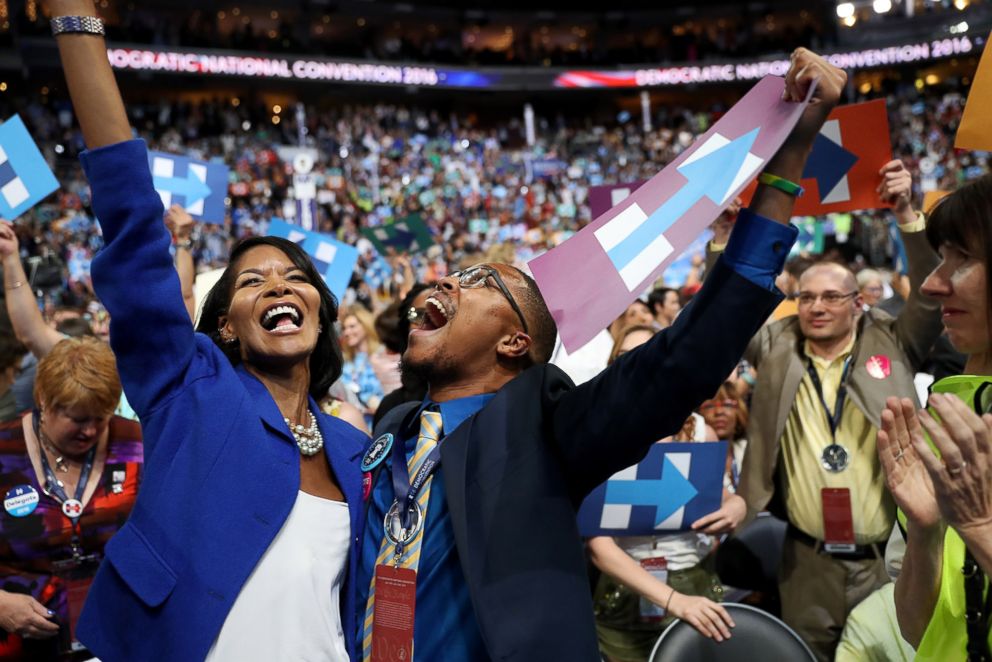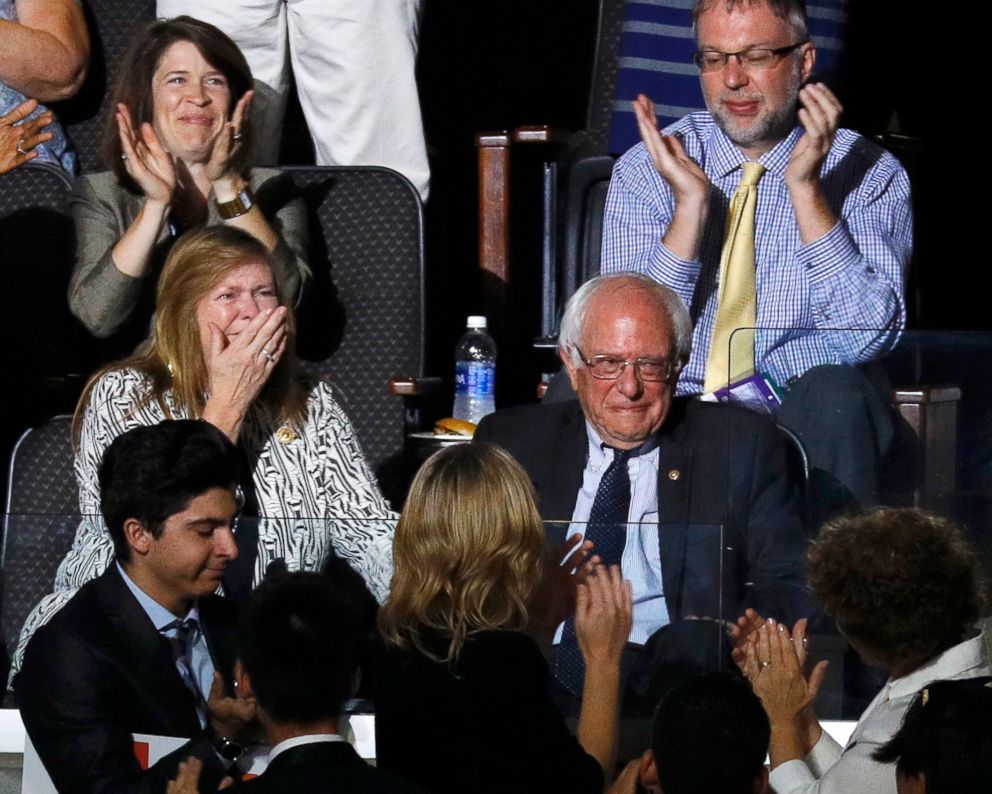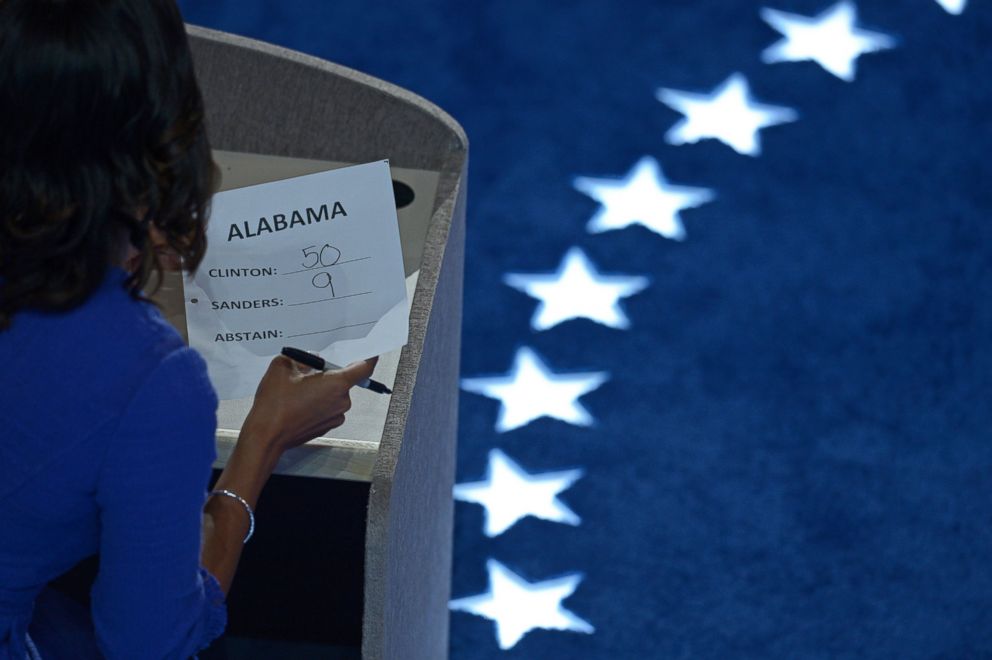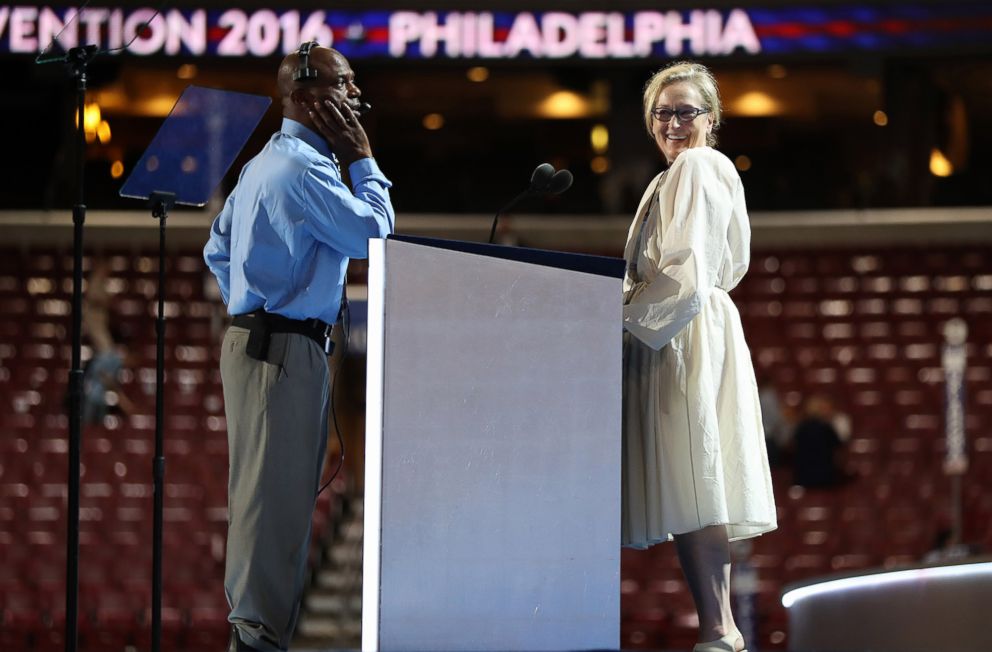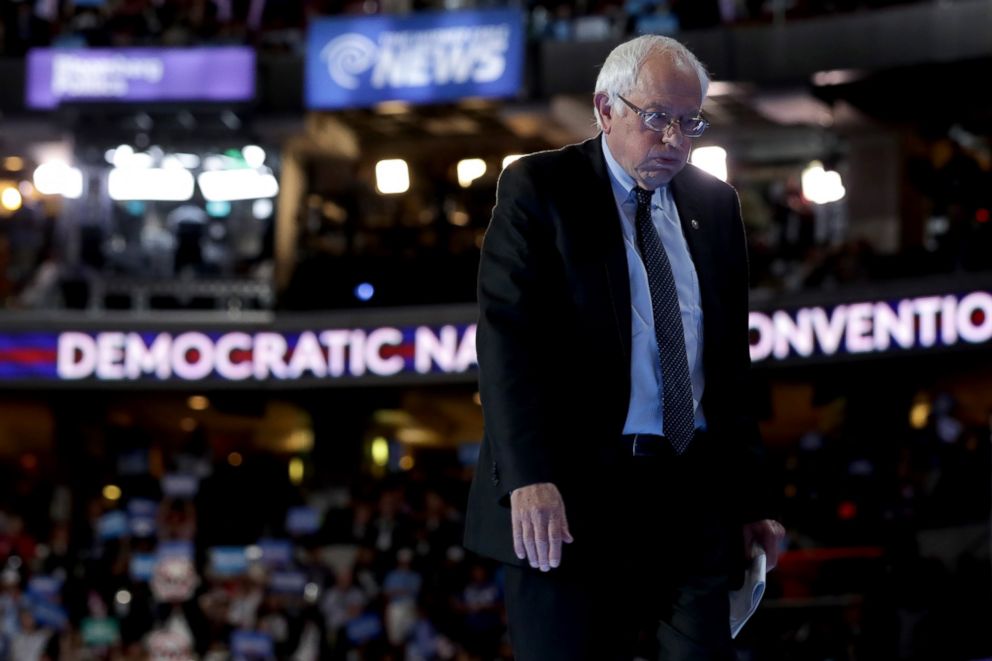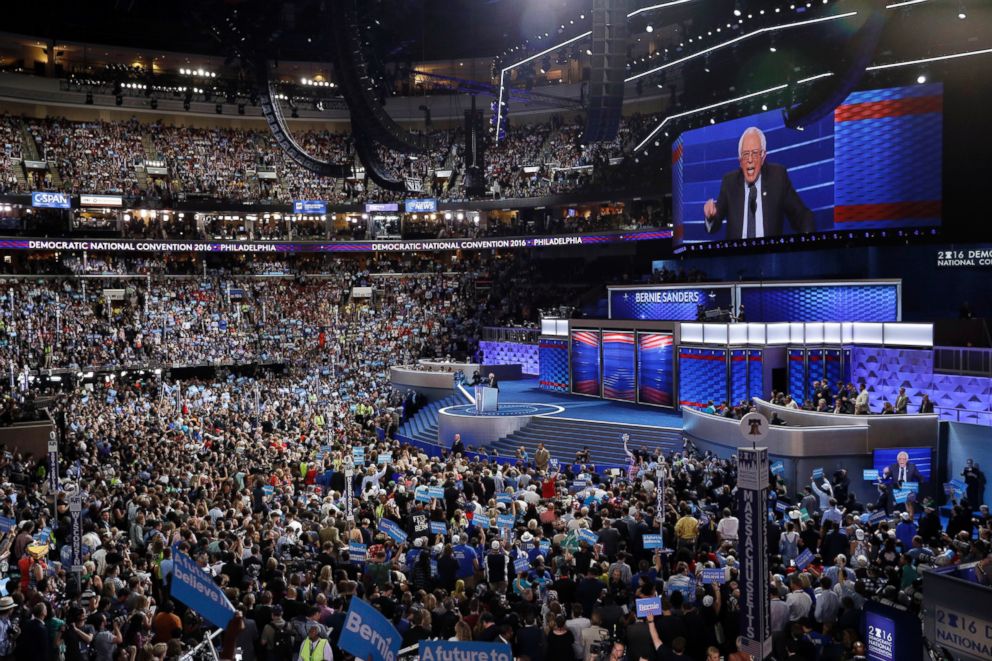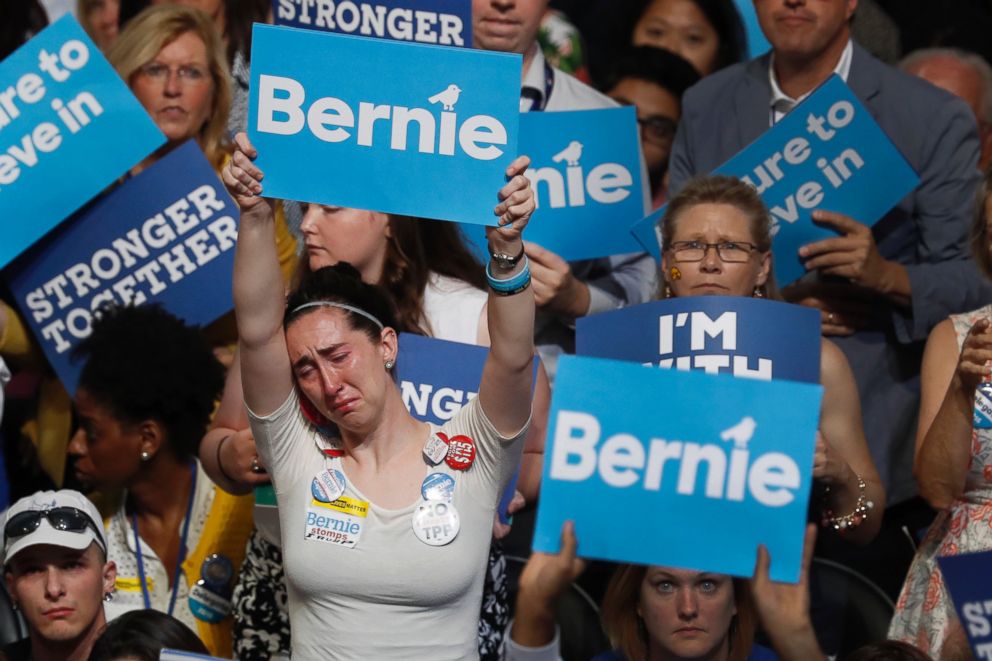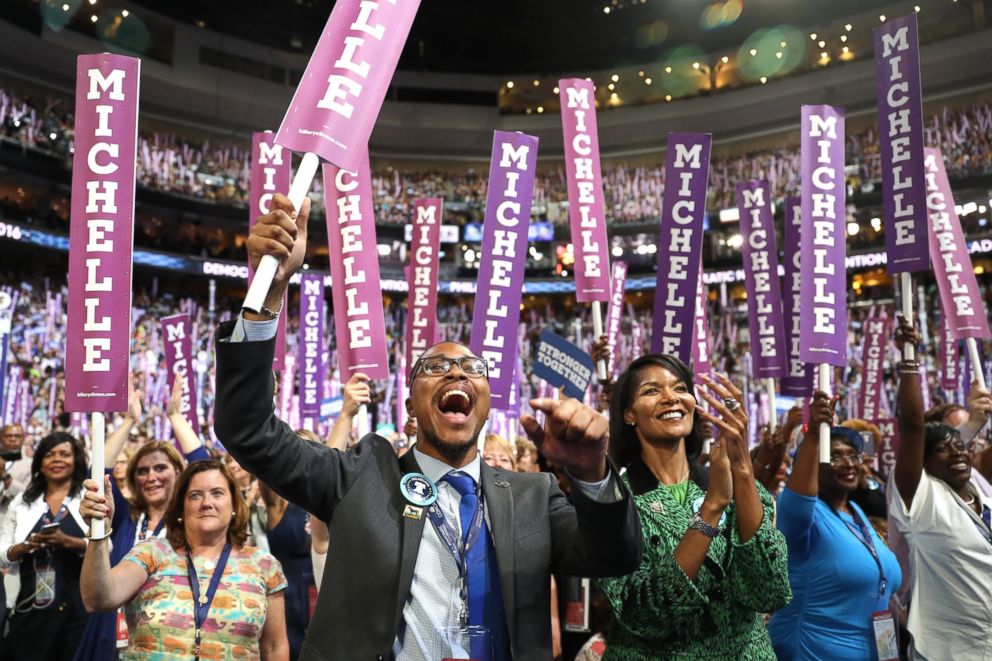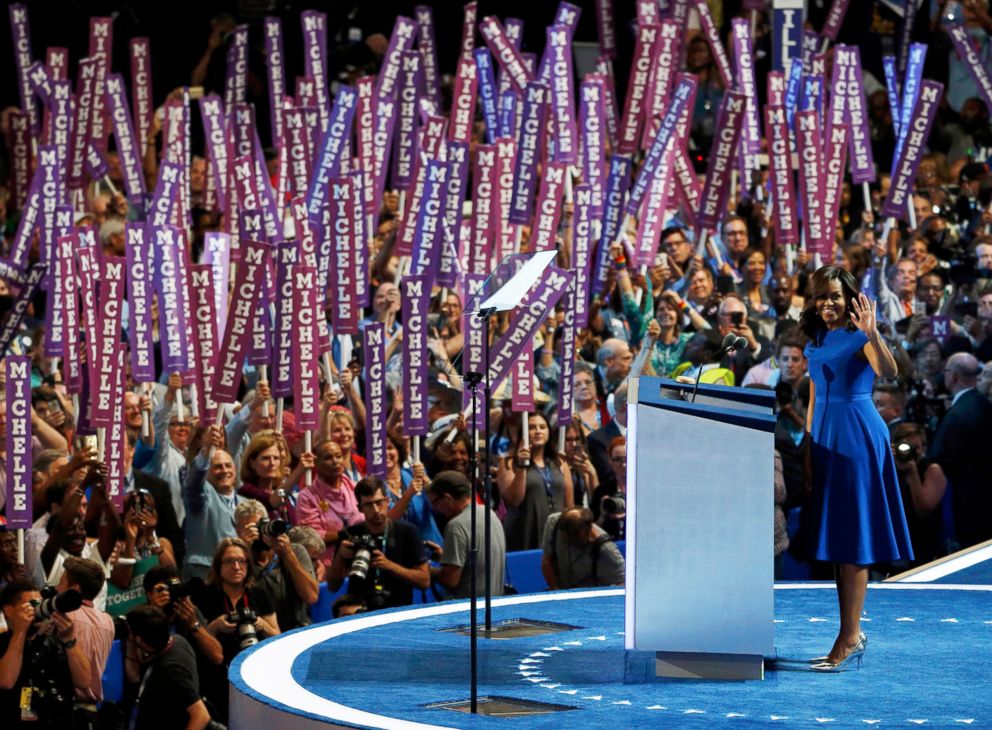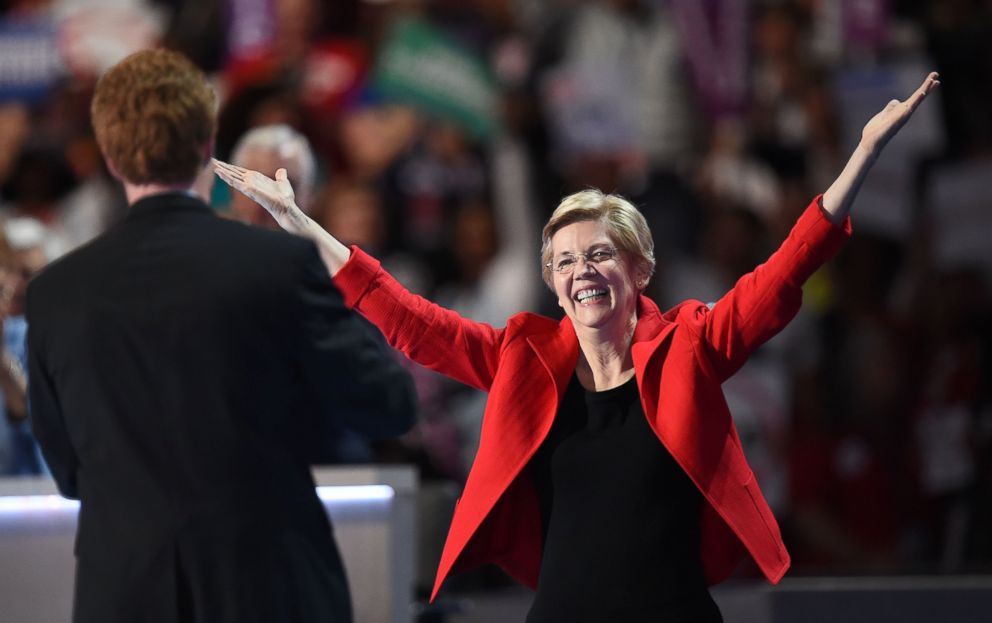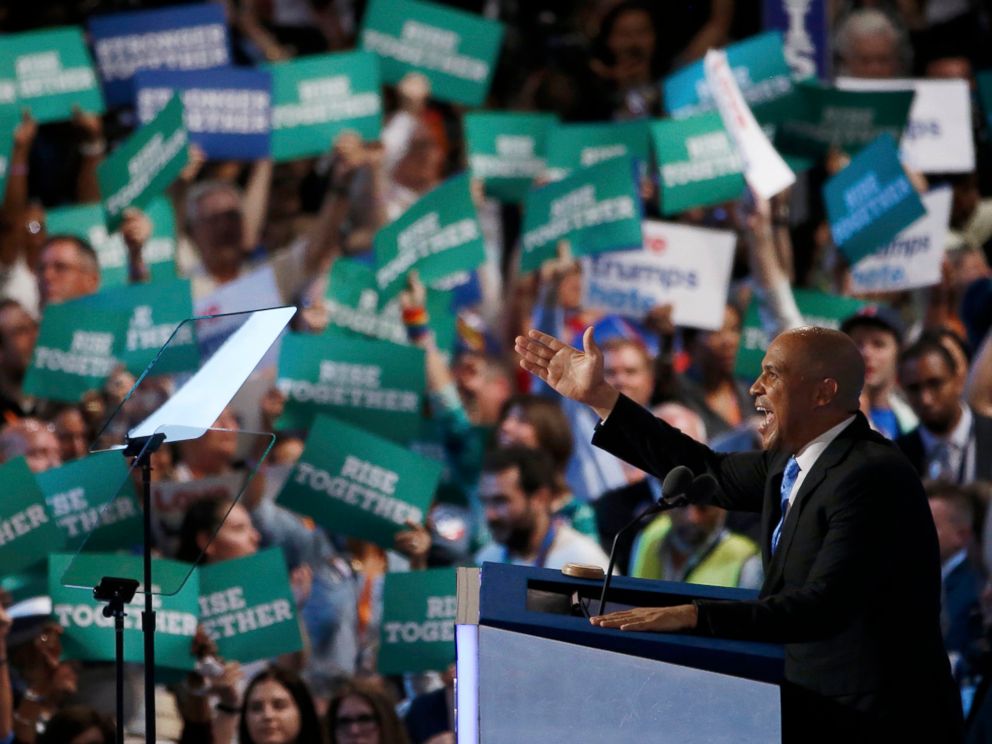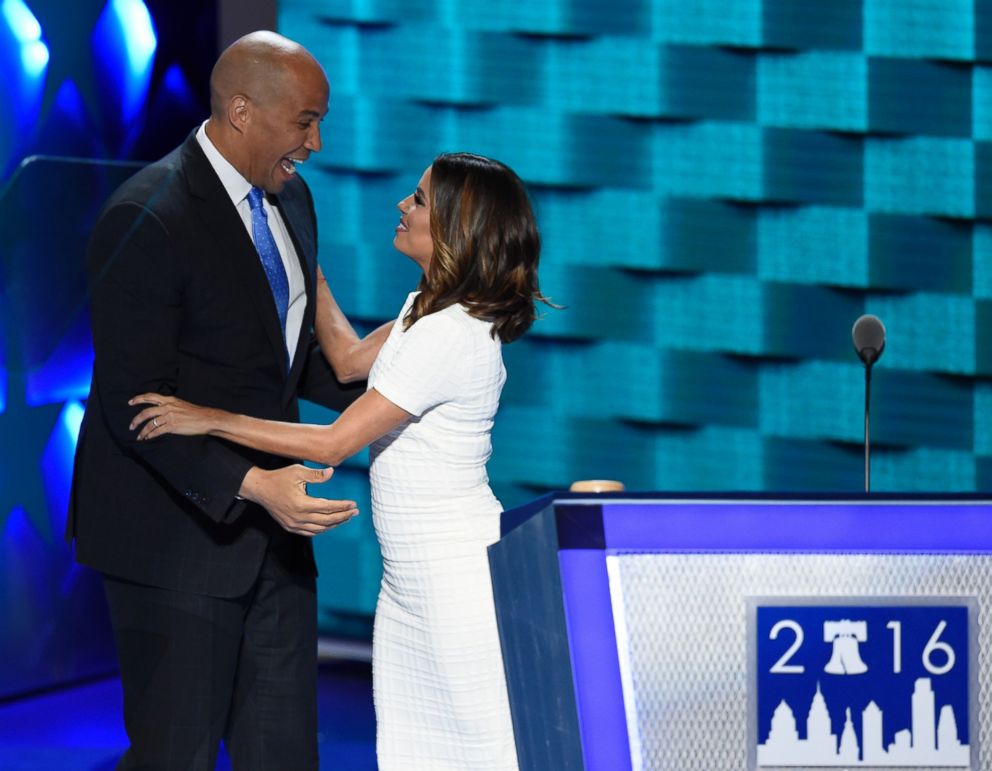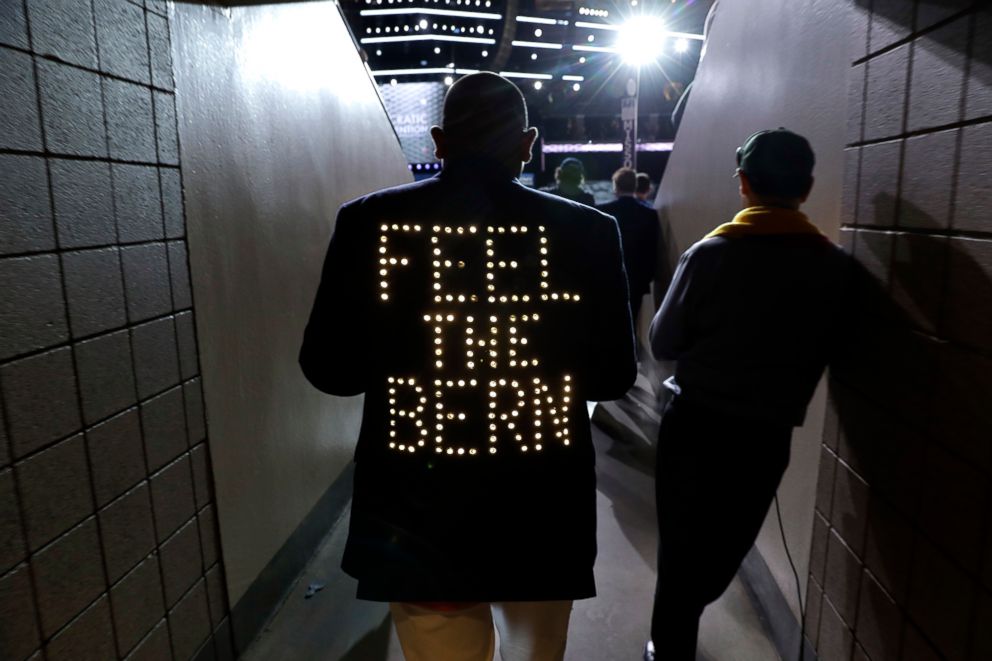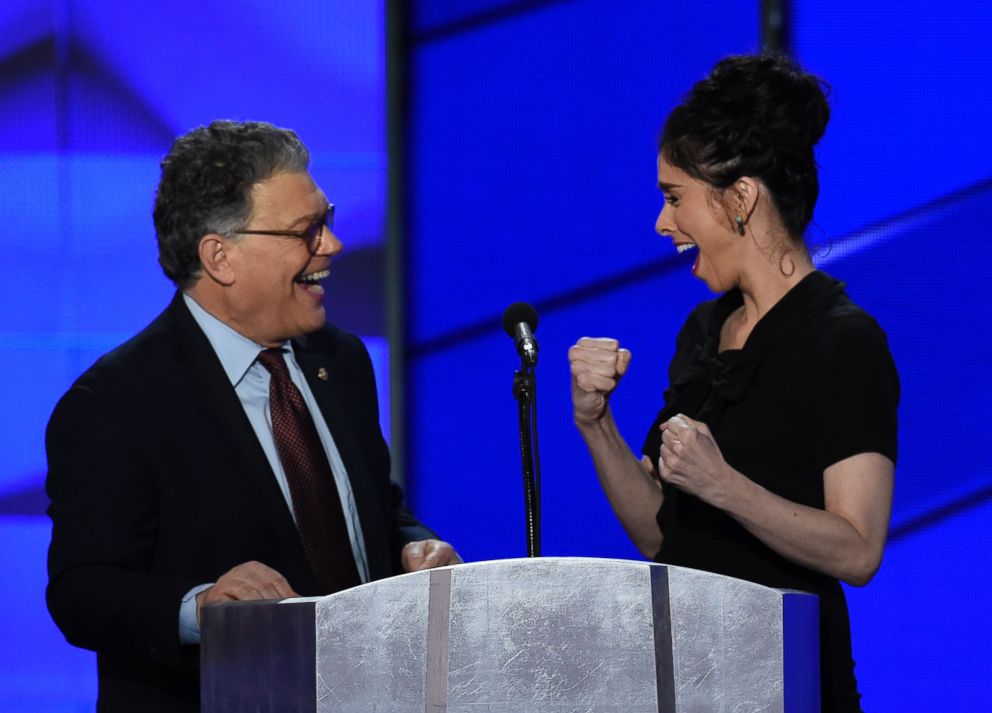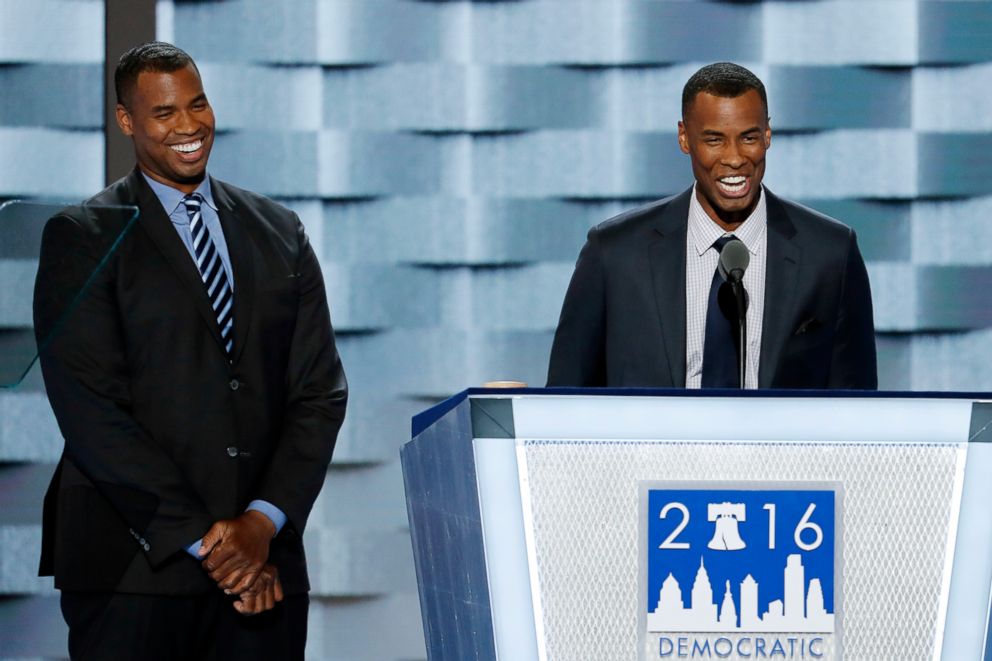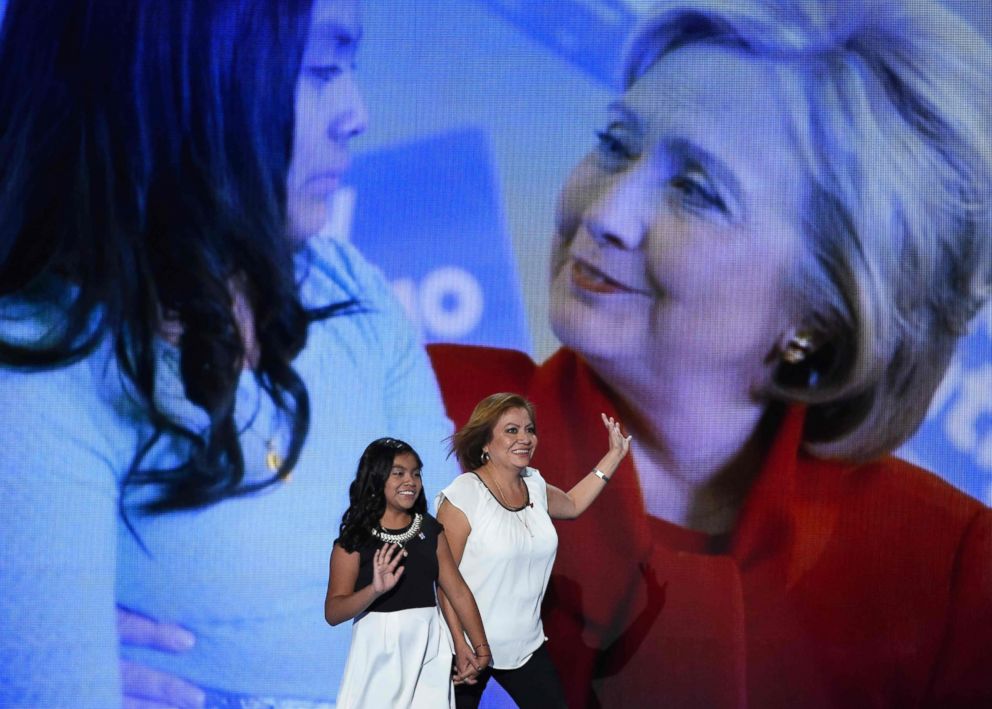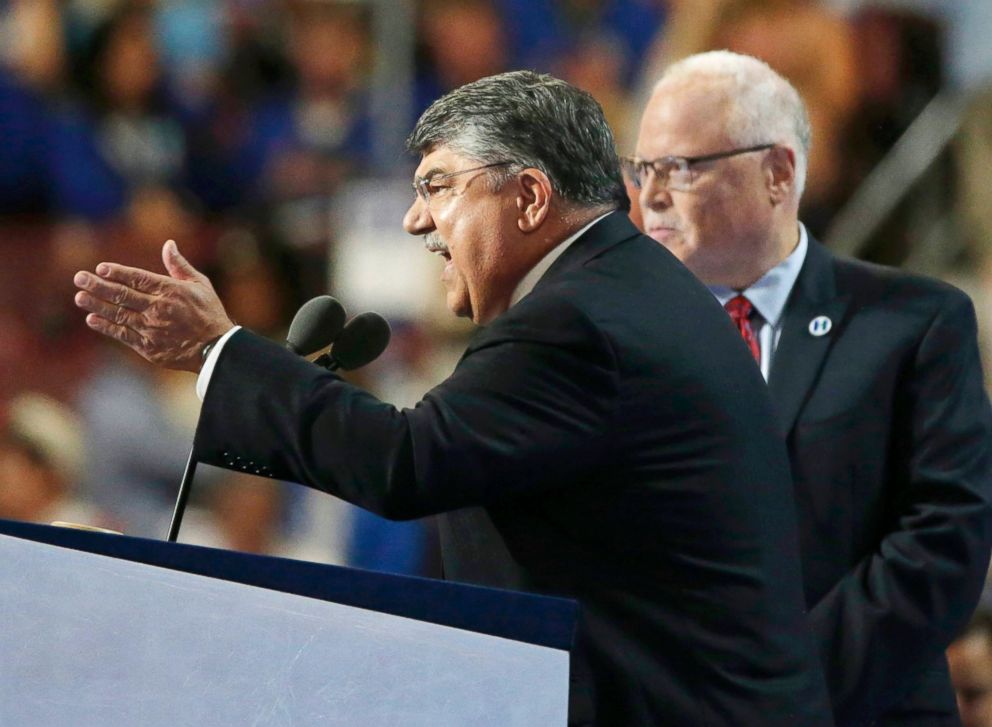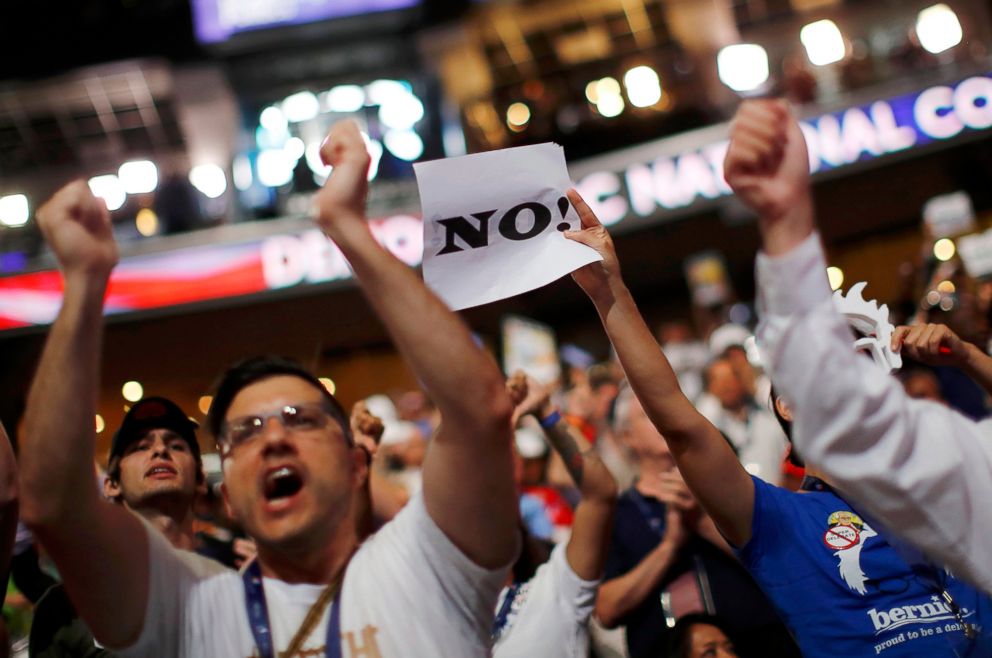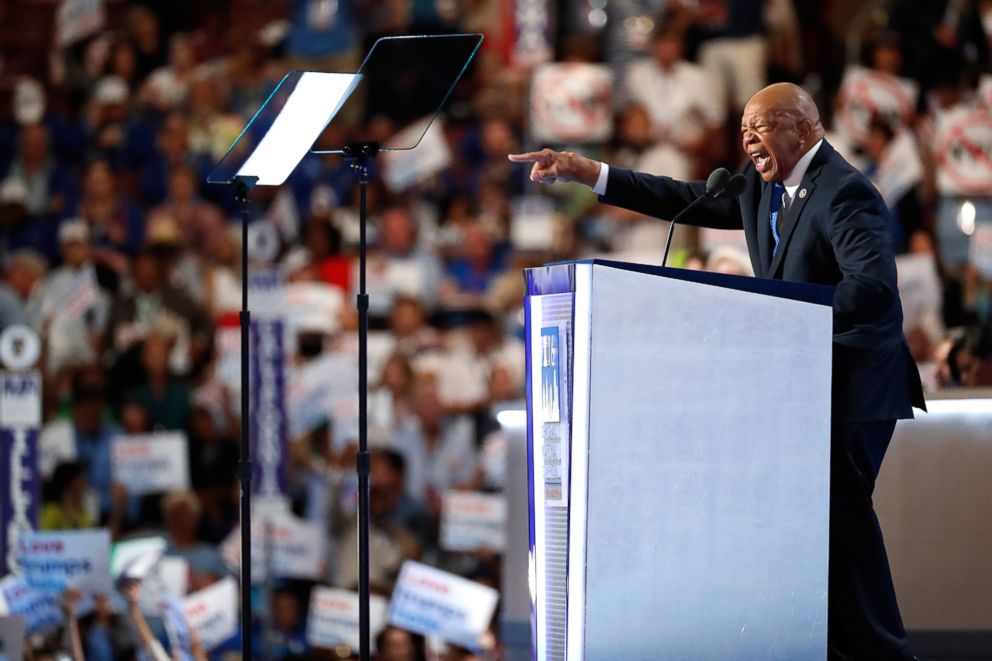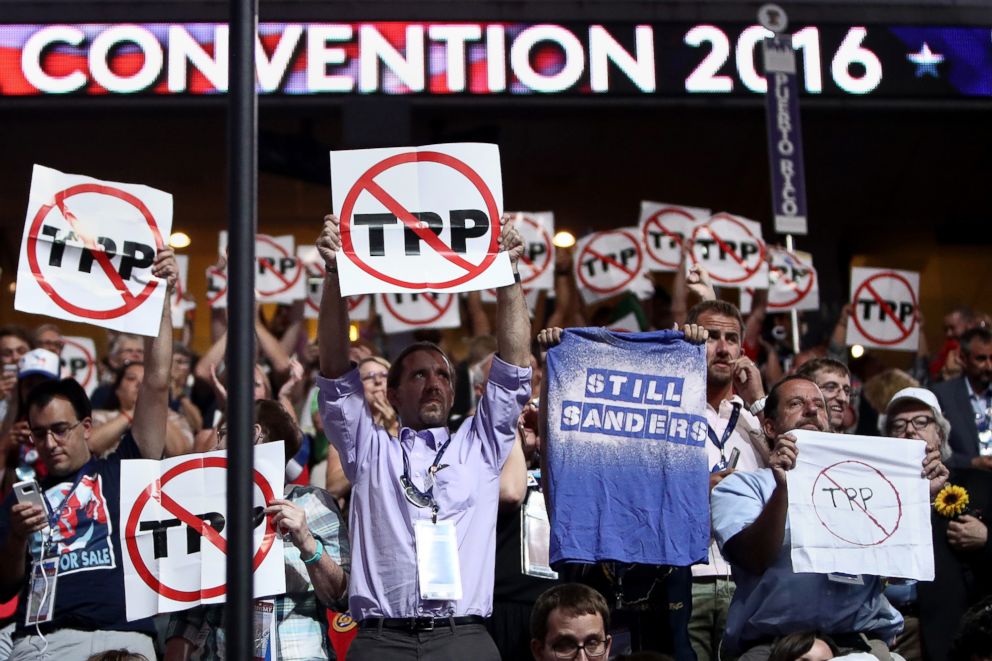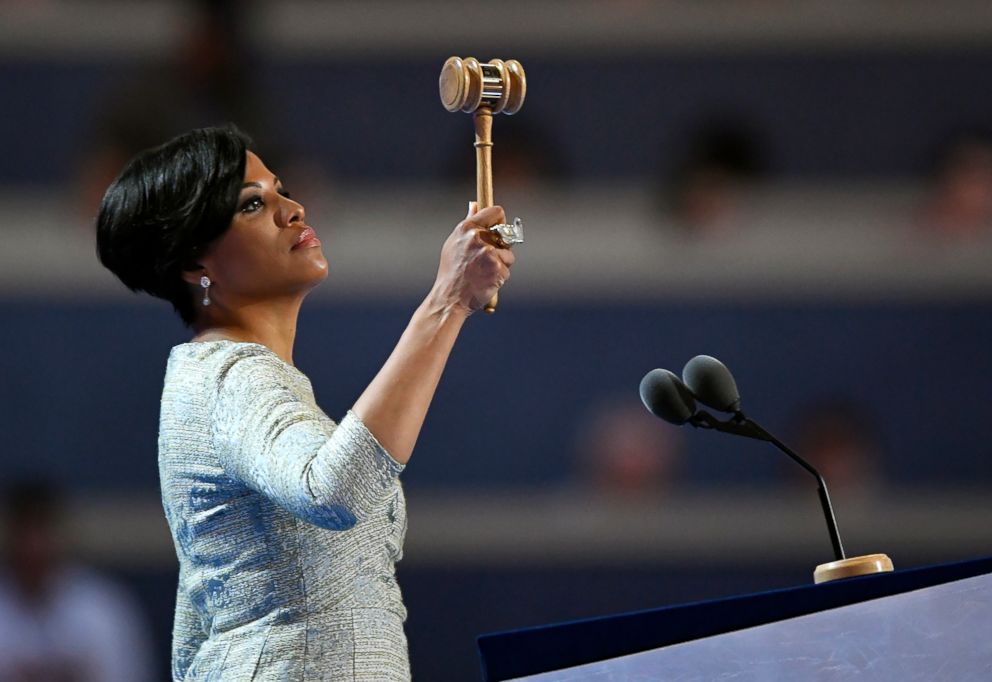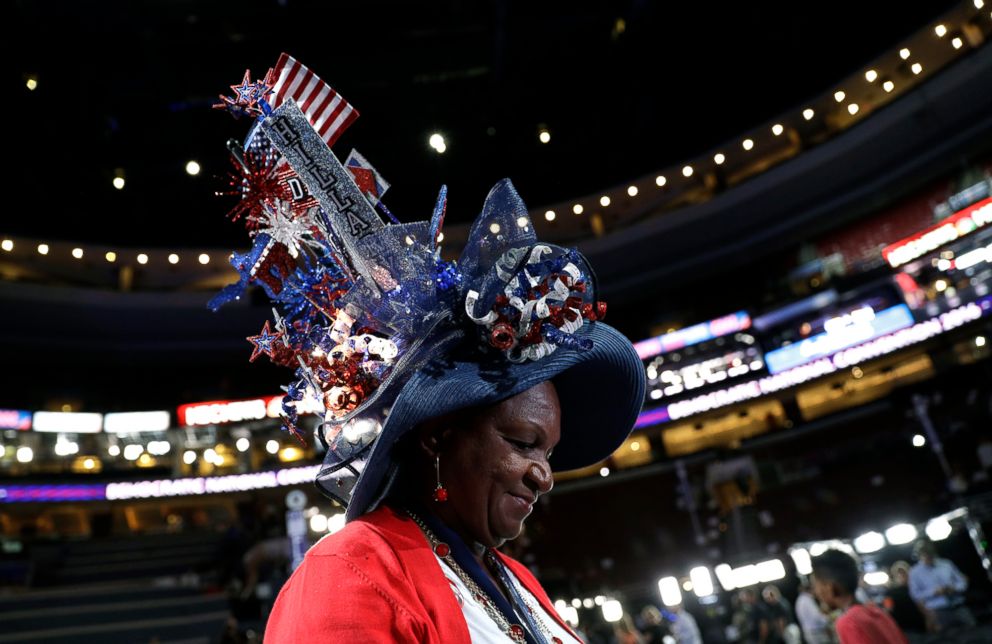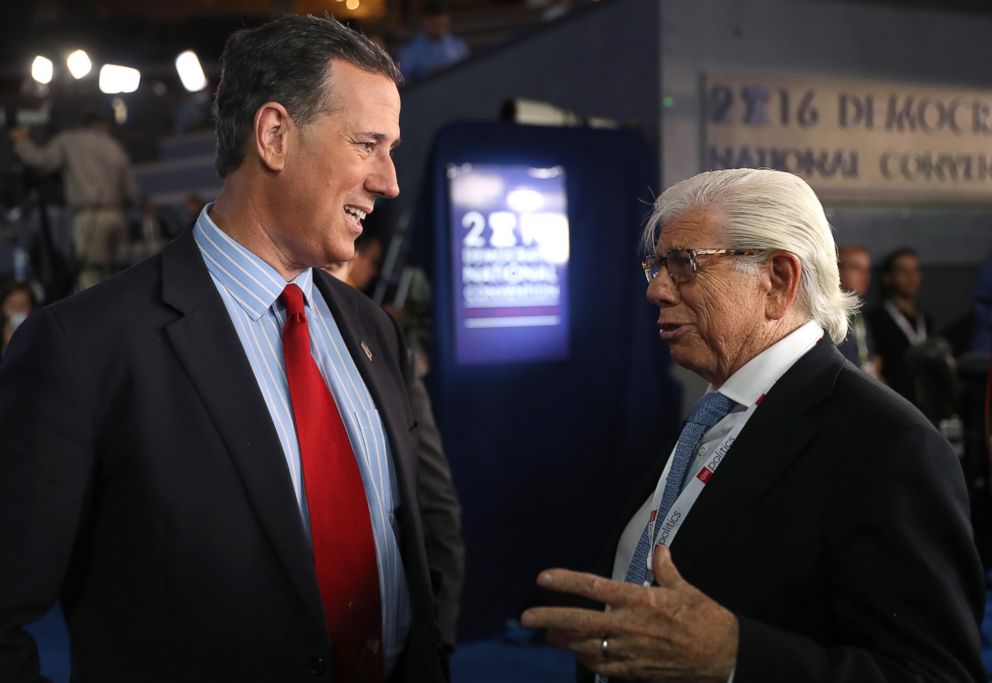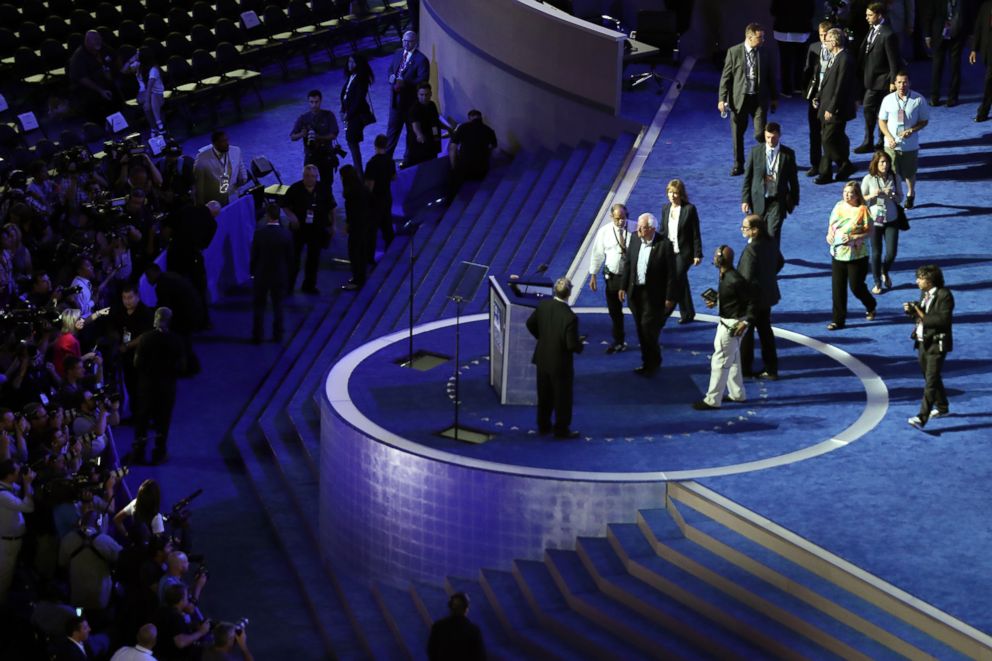Democratic National Convention 2016: Fact-Checking the Speakers
Every day, ABC News will be fact-checking speakers at the Democratic convention.
— -- The Democratic Party is holding its convention in Philadelphia this week.
Every day, ABC News will be fact-checking speakers at the Democratic National Convention.
DAY FOUR: Thursday, July 28
Fact Check: Auto Industry Had Its Best Year Ever
Claim: The U.S. auto industry had its best year ever in 2015
Rating: Mostly true, but potentially misleading. Auto sales did indeed hit a record high, but those sales included imports. American automakers did see a boom in sales, but not record-breaking sales.
Hillary Clinton said, “Our economy is so much stronger than when they took office. Nearly 15 million new private-sector jobs. Twenty million more Americans with health insurance. And an auto industry that just had its best year ever.”
Background: Auto sales in the U.S. did hit a record high in 2015, the Wall Street Journal reported, topping a record set 15 years earlier.
That’s just a total of cars and trucks sold in the U.S., which includes imports. If we take Clinton’s claim to mean American auto manufacturers had their best year ever, the sales figures don’t necessarily back that up.
That said, the Big Three did see a boom, if not record years. From the Detroit Free Press:
"Fiat Chrysler Automobiles said it sold more vehicles than in any year since 2005."
"Ford had its best year since 2006."
"General Motors sold nearly 3.1 million vehicles, a 5% increase over 2014."
Politifact rated this claim Mostly True, noting that 71 percent of 2015 U.S. auto sales were imports, more than in the 1950s golden age of the Big Three, but that experts have said the overall boom means a fair conclusion about a “best year” for U.S. automakers.
Fact Check: Hillary Clinton Does Not Want to Repeal the Second Amendment
Claim: Hillary Clinton does not want to repeal the Second Amendment
Rating: True. Clinton has repeatedly counterbalanced her gun safety proposals with the need to respect the Constitutionally-protected right to bear arms. But by creating a more liberal Supreme Court, she could help usher in a narrower interpretation of the Second Amendment.
Hillary Clinton said: “And if we're serious about keeping our country safe, we also can't afford to have a President who's in the pocket of the gun lobby. I'm not here to repeal the Second Amendment.”
Background: Clinton’s Republican opponents have frequently accused her of wanting to abolish the Second Amendment—a charge Politifact rated it false, which we corroborated in an earlier fact check.
There are numerous examples of Clinton balancing her desire for more gun control with the need to abide by the rights of gun owners.
Some Republicans have argued that a leaked audio recording in which Clinton is heard saying, “The Supreme Court is wrong on the Second Amendment” proves she wants to undo the law.
But Clinton’s campaign says her statement, taken in context, is more nuanced. A spokesperson explained Clinton was referring to her disappointment over the Supreme Court’s 2008 Heller opinion, written by Justice Antonin Scalia. She would have preferred the court decided the case in a way that gave cities and states more latitude to enact local safety measures, the spokesperson explained.
It’s worth noting that if elected, Clinton could alter the ideological composition of the Supreme Court by nominating liberal justices. Given that Heller was a 5-4 decision, replacing Justice Scalia with a liberal justice who views the Second Amendment more narrowly could lead to a restriction of currently-recognized gun rights.
Fact Check: Hillary Clinton Doesn't Want to Take Your Guns Away
Claim: Hillary Clinton does not want to take guns away from owners
Rating: Mostly True. Clinton’s gun-control measures do not appear to include taking guns away from people who already own them, even if she does want to restrict sales.
Hillary Clinton said, “I’m not here to take your guns away.”
Background: Hillary Clinton sought to assuage law-abiding gun owners that she does not want to take away guns that people already own.
Clinton does want to restrict gun rights, which would reduce the number of guns owned by Americans, but not take them away. Clinton’s proposed policies include expanded background checks and banning domestic abusers, violent criminals, and the mentally ill from buying guns.
Clinton has also called for reinstating the 1994 “assault weapons ban”—her most direct ban on a kind of gun.
But that 1994 law, which expired in 2004, did not take guns away. It allowed owners of high-powered semi-automatic rifles to keep and continue to transfer them, according to the Law Center to Prevent Gun Violence. So Clinton is correct: Even though she wants to restrict gun sales, Clinton does not want to take guns away from law-abiding owners.
The 2016 Democratic National Convention

Fact Check: Hillary's Programs Would Be Paid For
Claim: The cost of Hillary Clinton's programs would be offset by her tax plan
Rating: Questionable. Under the Committee for a Responsible Federal Budget’s three scenarios, only their low-cost estimate projects Clinton's programs being fully funded.
Hillary Clinton said: "Now, here's the thing, we're not only going to make all these investments, we're going to pay for every single one of them. And here's how: Wall Street, corporations, and the super-rich are going to start paying their fair share of taxes."Background: Hillary Clinton has proposed new spending on health care, infrastructure, education, and paid leave, and has claimed these programs will be fully funded, primarily through taxes on high earners.
Last month the Committee for a Responsible Federal Budget, an independent, bipartisan think tank analyzed Hillary Clinton's fiscal policy under three different scenarios: a low-cost, central and high-cost estimate.
Only under the low-cost estimate are Clinton's programs fully funded. In fact, the low-cost estimate projects her plan lowering debt by $150 billion over a decade. For context, the low-cost scenario incorporates revenues from a business tax that Clinton had not specified at the time of the analysis, and uses some different estimates than the other scenarios.
According to the central estimate, however, Clinton would add about $250 billion to the debt over 10 years.
The high-cost estimate, which incorporates the sequester relief Clinton has called for, and relies on the conservative-leaning Tax Foundation’s estimate of her tax plan instead of the center-left Tax Policy Center's, projects even larger increase-- $2.2 trillion—would be added to the debt over 10 years.
Fact Check: Donald Trump is in the NRA's Pocket
Claim: Donald Trump is in the NRA’s pocket
Rating: Questionable. It’s impossible to know whether a politician is in anyone’s “pocket.” Trump opposes restrictions on gun rights, and the NRA has spent millions airing ads on his behalf.
Hillary Clinton said, “[W]e also can’t afford to have a president who’s in the pocket of the gun lobby.”
Background: Donald Trump has publicly taken pride in his self-funded primary campaign, boasting that he will not be beholden to any special-interest groups as president.
He has opposed gun restrictions, including the so-called “assault weapons ban” that Clinton supports, and expanded background checks. He hinted he might break with the NRA, saying he would meet with the group to discuss banning those on terrorist watch-lists from buying guns, but Trump emerged from that meeting opposing such a ban.
The NRA, meanwhile, has aired ads on Trump’s behalf. It has reported spending over $3.2 million to support Trump or oppose Clinton so far this election. It spent $2 million on this one, which appeared to have been filmed at a national cemetery in violation of government policy, as ABC reported.
Fact Check: Economy Added 15 Million New Private-Sector Jobs Since Obama Inauguration
Claim: The economy has added 15 million new private-sector jobs since President Obama took office
Rating: Mostly true, but requires context. According to data from the Bureau of Labor Statistics, the economy experienced a gross addition of nearly 15 million jobs since February 2009. However, the net addition is closer to 10 million when accounting for the jobs lost during President Obama’s time in office.
Hillary Clinton said in her acceptance speech, “Our economy is so much stronger than when they took office. Nearly 15 million new private-sector jobs.”
Background: The first several months of President Obama’s presidency were marked by staggering job losses. Between February 2009 and June 2016, the economy lost 4,637,000 jobs and added 14,759,000 jobs.
It is also important to point out that the Bureau of Labor Statistics includes part-time jobs in its calculations, thus making it difficult to discern the types of private-sector jobs included in these aggregated numbers. One criticism of the post-financial-crash recovery has been that there are Americans who are underemployed, if not unemployed.
This leaves the economy with a net addition of 10,122,000 jobs. So, while it is true that the economy has experienced a gross addition of 15 million new private-sector jobs, it is important to contextualize this within the amount of job losses that the economy experienced.
Fact Check: Clinton Will Deliver Largest Jobs Investment Since World War Two
Claim: Hillary Clinton will deliver the largest investment in jobs since World War II
Rating: Possibly true, but debatable. Clinton has promised $1 trillion in spending over 10 years, by one estimate, but not all of that is for jobs, and it’s not entirely clear this would surpass Obama’s $840 billion stimulus package. Congress would also have to sign off.
Colorado Gov. John Hickenlooper said: “She’s going to make the largest single investment in jobs since World War II.”
Background: Hillary Clinton herself has promised to deliver what Hickenlooper promised, calling for “the biggest investment in new, good-paying jobs since World War II,” in a June speech.
Needless to say, this plan could be contingent on agreement with a Republican House of Representatives that has shown little appetite for new spending.
Clinton has advertised hefty spending to boost employment, most notably $275 billion over five years on infrastructure, plus other programs like $10 billion to boost manufacturing. Clinton’s total spending over 10 years would total $1.1 trillion, according to McClatchy’s analysis. The Committee for a Responsible Federal Budget, chaired by Mitch Daniels and Leon Panetta, totaled her spending at $1.8 trillion over 10 years.
Not all of that spending is for jobs, however. It includes money for education and fighting addiction, for instance.
Depending on how one counts that spending, one could argue that President Obama’s stimulus package would rank higher. That package will cost $840 billion from 2009-2019, according to analysis by the CBO in 2015. It included infrastructure spending, tax rebates, and other measures like food stamps and Medicaid spending.
Debating this point depends largely on what one considers “jobs” spending, but it’s worth pointing out that Clinton will have her work cut out for her, with Obama having just signed an $840 billion economic stimulus in 2009.
Fact Check: Economists Say Trump's Tax Plan Will Cost 3.5 Million Jobs and $30 Trillion in Debt
Claim: Economists say that Trump’s tax plan will cost 3.5 million jobs and put Americans $30 trillion in debt
Rating: True, but potentially misleading. Moody’s projects the plan would cost 3.5 million jobs, but the $30 trillion figure is from a 20-year projection and is at the high end of estimates.
Rep. Tim Ryan said of Trump, "Economists say he’s promised so many tax breaks to rich guys and corporations, it will cost us 3.5 million jobs, and put us $30 trillion deeper in debt."
Background: Ryan’s claim puts together two numbers from different studies conducted by economists.
The first number – 3.5 million jobs – comes from a study conducted by Mark Zandi, a former John McCain advisor and current chief economist at Moody’s Analytics, a research body owned by Moody’s. According to Politifact, Zandi is a registered Democrat and contributed to Clinton’s primary campaign.
It should be noted, however, that Moody’s is highly regarded and the study was co-authored by other economists at Moody’s.
The second number, $30 trillion, comes from a report authored by experts at the Urban Institute-Brookings Tax Policy Center. According to Politifact, this number was the largest in the study, based on a 20-year projection (which the study put at $34.1 trillion). The ten-year projection was $11.2 trillion. By contrast, Moody’s, in the same report cited above in regards to Ryan’s first number, put the amount that Trump’s plans would add to the national debt at between $1 trillion and $9.7 trillion, on the basis of various “scenarios” the study used.
Thus, it is true that economists have said that Trump’s plan could cost 3.5 million jobs and $30 trillion in debt, but these numbers should be contextualized.
Fact Check: Donald Trump Defended the U.S. Internment of Japanese-Americans During World War Two
Claim: Donald Trump has defended the U.S. internment of Japanese during WWII
Rating: False. While he has not always forcefully condemned the practice, there is no evidence that Trump has defended it outright. He is also on record with ABC News definitively ruling out internment camps for American Muslims.
Rep. Joaquin Castro (D-TX) said: "Grandchildren of Americans who suffered in World War II internment camps — the same camps that Donald Trump has defended — and grew up to be business owners, war heroes, and public servants."
Background: During WWII, the U.S. forced some 120,000 residents of Japanese ancestry, including nearly 75,000 American citizens, into internment camps. The controversial practice survived constitutional challenges but is generally regarded as a deplorable chapter in U.S. history.
So did Donald Trump actually defend America's forced relocation and incarceration of Japanese--a question which has come up in the context of his proposed ban on Muslims entering the U.S.?
Trump was asked repeatedly during an appearance on Morning Joe in December 2015 if the Japanese internment camps went against American values. He declined to answer.
In an interview that month with Time Magazine, Trump said he wasn't sure if he would have supported WWII-era internment camps, but that he hates the “concept.” “I would have had to be there at the time to tell you, to give you a proper answer,” he said. “I certainly hate the concept of it. But I would have had to be there at the time to give you a proper answer.”
Later, he told ABC News's Jon Karl on This Week in March 2016 he would rule out internment camps for American Muslims.
KARL: "So let me ask you, you said that Islam is at war with us. A lot of people wonder, given some of your proposals, whether or not you would go the next step towards internment camps. And I know you've never proposed that. But let me just ask you here now, would you categorically rule out the idea of internment camps for American Muslims?"
TRUMP: "I would rule it out but we would have to be very vigilant. We're going to have to be very smart."
So while Trump has not always clearly condemned the practice, it's a stretch to say he defended it, and he has ruled out reprising internment camps for American Muslims.
DAY THREE: Wednesday, July 27
Fact Check: Twenty Million Americans Have Health Care Because of the ACA
Claim: Twenty million Americans have health care because of the Affordable Care Act.
Rating: True. According to the Department of Health and Human Services, 20 million Americans gained health care coverage because of the Affordable Care Act. Independent analysis largely corroborates the claim.
Background: President Barack Obama said, “But I promise you, when we keep at it, when we change enough minds, when we deliver enough votes, then progress does happen. And if you doubt that, just ask the 20 million more people who have health care today.”
In March 2016 the Department of Health and Human Services announced that 20 million people gained “health insurance coverage between the passage of the law in 2010 and early 2016.” The HHS attributed this to the Affordable Care Act.
Independent research largely corroborates the HHS statistic. The Rand Corp. released a study in May 2015 that found a net reduction of 16.9 million uninsured people. Given its release a year before the HHS numbers, it does not cast doubt on the government’ figure.
One possible challenge to the HHS numbers comes from Gallup, whose data HHS used in its study. Gallup found in April that 11 percent of surveyed Americans 18 or older said they lacked health coverage, down 6.1 percentage points since the ACA’s enactment. Multiplied by the latest (2015) census estimate of America’s adult population, that suggests closer to 15 million adults gained coverage. However, that figure does not include children.
Fact Check: Donald Trump's Invitation to Russia to Hack Hillary Clinton's Email Amounts to Criminal Intent
Claim: Trump’s invitation to Russia to hack Clinton's email amounts to criminal intent.
Rating: Questionable. Some legal experts contacted by ABC News said the comments were almost certainly protected free speech, while at least one attorney specializing in national security law believes it’s legally actionable. The consensus is that no charges will result from Trump’s statement.
A former JAG officer, retired Navy Rear Adm. John Hutson said, “This morning, this very morning, he personally invited Russia to hack us. That’s not law and order. That’s criminal intent.”
Background: Online searches for the definition of “treason” surged today after Trump said, “Russia, if you’re listening, I hope you’re able to find the 30,000 emails that are missing.” But did his statement rise to the level of criminality?
Top legal experts told ABC News' Lauren Pearle that Trump’s comments were almost certainly protected free speech, not any crime. “If Trump was actually working with Russia, that would be a crime. Merely expressing a sentiment, however idiotic or reprehensible, is not criminal,” said Peter Margulies of Roger Williams University School of Law.
In addition to Hutson at least one other lawyer said the comments were outside the First Amendment’s protective scope. Bradley Moss, a lawyer specializing in national security law, told The Daily Beast that Trump’s statements could be actionable because he had spurred Russia to undertake “imminent lawless action,” an unprotected form of speech.
“You could argue what Trump was urging Russia to do was hack Hillary’s server and release the contents to the media — conspiring with them to hack into a private server and release confidential information to the public,” Moss said. He added that under the Computer Fraud and Abuse Act, Trump could be charged as a conspirator but said it’s doubtful the FBI would take action.
Fact Check: Opinions of the United States are Higher Than They Were Eight Years Ago
Claim: The rest of the world sees the U.S. more favorably now than it did in 2008.
Rating: Mostly true. Polling backs this up, but comparisons are possible for only 32 countries. Of those, 27 have higher opinions of the U.S., and five have lower opinions.
Obama said, “Almost every country on earth sees America as stronger and more respected today than they did eight years ago when I took office.”
Background: It’s impossible to know for all nations (about 200, depending on who’s counting and how), because such extensive polling data do not exist.
The Pew Research Center has the best data on this question. Its surveys show that residents of 27 countries had a higher opinion of the U.S. in 2015 or 2016 (depending on the latest polls) compared with 2007 or 2008.
Five gave the U.S. lower favorability ratings: Egypt, Jordan, Kenya (which Obama visited to great fanfare), Lebanon and Russia.
See a chart with comparisons here. Gallup conducts similar polls, but its most recent data appear to come from 2011.
Fact Check: Trump Games US Visa System
Claim: Trump games the U.S. visa system.
Rating: Questionable. Trump hires temporary workers at Mar-a-Lago, despite Americans applying for the same jobs, according to The New York Times. Still, it’s not clear that Trump is conclusively taking inappropriate advantage of immigration laws, if that’s what Michael Bloomberg meant.
Bloomberg said, “He games the U.S. visa system so he can hire temporary foreign workers at low wages.”
Background: This is an apparent reference to Trump’s hiring foreign workers at his Mar-a-Lago Club in Florida on seasonal worker visas.
The New York Times found that Trump was hiring these workers even though Americans applied for the same jobs. From the Times’ story:
"Since 2010, nearly 300 United States residents have applied or been referred for jobs as waiters, waitresses, cooks and housekeepers there. But according to federal records, only 17 have been hired.
“In all but a handful of cases, Mar-a-Lago sought to fill hundreds of jobs with foreign guest workers from Romania and other countries.”
The visas are issued through one of a handful of legal and often debated programs through which employers may temporarily hire foreign workers when American labor is not available. As part of its applications to the Labor Department for the visas, Mar-a-Lago attested that in the vast majority of cases, it was unable to fill the positions with American workers. As he told MSNBC’s “Morning Joe” in September, “Getting help in Palm Beach during the season is almost impossible.”
So there is a case to be made that Mar-a-Lago has gamed the system by hiring foreigners when Americans applied for the jobs, as the Times reported.
“Game” often connotes cheating, and if Bloomberg meant that Trump breaks immigration laws, then it’s hard to say conclusively that’s the case, absent any violations found against Trump. It could also mean that Trump simply takes advantage of visa laws, which clearly Mar-a-Lago does, according to the Times.
Mike Pence Has Supported Overt Discrimination
Claim: Pence has supported overt discrimination.
Rating: Questionable. While some consider Mike Pence a scourge of the LGBT community, he has consistently defined his governing philosophy in terms of his Christian and conservative values and, when faced with criticism, has said he opposes discrimination.
California Lt. Gov. Gavin Newsom said, “Mike Pence [is] America’s most anti-LGBT governor. Pence has supported overt discrimination.”
Background: As a congressman and now as Indiana governor, Pence has been a steadfast champion of what he considers conservative and religious causes and often describes himself as a “Christian, a conservative and a Republican, in that order.”
He has sided against same-sex marriage rights and anti-discrimination policies to protect gays and lesbians, earning him criticism like Newsom’s.
In a 2006 speech about marriage on the House floor, then-Rep. Pence spoke about marriage between a man and a women as “God’s idea” and pushed back against criticism that his support for so-called traditional marriage was rooted in discrimination.
“And let me say emphatically that this debate today is not about discrimination. I believe that if someone chooses another lifestyle than I have chosen, that that is their right in a free society. But tolerance does not require that we permit our courts to redefine an institution upon which our society depends,” he said.
Pence again cited his religious convictions in explaining his vote against the federal Employment Non-Discrimination Act of 2007, a bill that, he said, “wages war on freedom of religion in the workplace.”
As governor, he gained national attention last year for his decision to sign his state’s Religious Freedom Restoration Act, a law that LGBT advocates warned would increase discrimination by barring Indiana localities from passing anti-discrimination measures. Pence maintained it was not discriminatory, saying, “If I thought it was about discrimination, I would have vetoed it.”
Under public pressure, later signed an amendment addressing concerns about the law. As ABC News’ Meghan Keneally reported, “The amendment to Indiana’s controversial religious freedom law stops businesses and individuals from refusing service or goods to people based on sexual orientation, gender identity or other reasons — but the law could still serve as the basis for some denials of services or goods, though only when religious officials or groups are involved.”
When criticized over the law, Pence repeatedly insisted that it was “not about discrimination.”
A Time roundup of Pence’s other positions on LGBT issues shows him explaining his policies through a lens of traditional conservatism.
Although it’s fair to argue that some of the measures Pence has supported have led to discrimination, it’s open to interpretation whether he supports “overt discrimination,” given that Pence has consistently defined his governing philosophy in terms of Christian conservative values and has explicitly sought to avoid the perception that he condones discrimination.
Fact Check: Trump Would Allow Guns in Classrooms
Claim: On his first day in office, Trump would allow guns in classrooms.
Rating: Questionable. Trump has not promised to mandate guns in classrooms, but he has said teachers or other “trained” adults should have them. Students should not carry guns in classrooms, he has said, but he has promised to undo federal restrictions on guns in schools.
Sen. Chris Murphy said, “Trump said that by the end of his first day in office, he’ll mandate that every school in America allow guns in their classrooms.”
Background: Trump has taken contradictory stances. He has promised to eliminate federal restrictions on carrying guns in and around schools, but he has also said he doesn’t want to allow guns in classrooms.
“I will get rid of gun-free zones on schools” and “on military bases,” Trump said in January, promising to eliminate such restrictions on his “first day” in office.
That was a reference to the Gun-Free School Zones Act of 1990, which barred possession of firearms in schools and within 1,000 feet of them. Eliminating the law would effectively allow people to carry guns in schools unless otherwise prohibited by state law.
After Clinton accused Trump of promising to mandate that guns be allowed in classrooms, he backtracked and said he did not want students to carry guns in classrooms.
“I don’t want to have guns in classrooms, although in some cases, teachers should have guns in classrooms, frankly,” Trump told Fox in May.
“If trained people had guns, you wouldn't have the carnage that you've had,” he later told CNN, while maintaining his opposition to gun-free school zones as “candy to bad people” who “hear ‘gun-free zones’ and they go in there with their guns blazing.”
Fact Check: Reservists Say Trump Fired Them for Service Duties
Claim: Military reservists say that Trump’s businesses fired them for missing work because of duty-related obligations.
U.S. Rep. Ruben Gallego said, “When it comes to honoring the service of our troops, reservists have said Trump’s businesses fired them for missing work because of their duties. That’s not just illegal. It’s immoral.”
Rating: True. According to reports, an employee of Trump University who served in the Army Reserve claimed that she was fired because of the days she needed to take off in order to fulfill her service obligations.Background: According to CNN, Corinne Sommers, a former employee of Trump University, sued the company after she was fired and later reached a settlement. In a class action lawsuit, she claimed that her supervisors fired her because of the days she needed to take off to fulfill her service obligations as a reservist.
Regardless of whether it is true that this was the reason for Sommers’ termination, it is true that a reservist said that one of Trump’s businesses fired her because of her duties.
Fact Check: Trump and Pence Want to Invest Retirement Benefits in the Stock Market
Claim: Trump and Pence will put Americans’ retirement funds in the stock market.
Rating: Questionable. Trump and Pence have both advocated at various points for privatizing aspects of Social Security, but the Trump campaign does not have an official position on the matter.
Senate Minority Leader Harry Reid said, “Donald Trump and Mike Pence want to gamble with your retirement benefits in the stock market.”
Background: Both Trump and Pence have, at times, advocated for privatizing Social Security, but more recently Trump has not sounded as if he wants to do so.
While in Congress, Pence reportedly backed President George W. Bush’s push to privatize Social Security and allow Americans to invest instead in private savings accounts.
Trump advocated for a similar policy in a book he wrote in 2000, according to The Motley Fool. He reportedly called for allowing “every American to dedicate some portion of their payroll taxes to a personal Social Security account that they could own and invest in stocks and bonds.”
More recently, Trump has taken a different position. In his 2011 book, “Time to Get Tough,” he wrote that Social Security is a “deal that should be honored” for those who have paid in and that the U.S. government should make an “ironclad commitment” to providing a retirement safety net. In June he wrote in an AARP op-ed that he wants to “secure Social Security for the future.” He also reportedly told a radio station this year that he wants to keep Social Security “intact.”
His campaign has not yet released a comprehensive plan for Social Security, making it unclear where he currently stands on privatization. But on the basis of those more recent comments, Reid’s claim is questionable.
Fact Check: US Trades More With Mexico Than With China
Claim: The U.S. trades more with Mexico than with China.
Rating: False. The U.S. trades more with China, according to U.S. government trade figures.
In admonishing Trump for his comments about Mexicans, Jesse Jackson said, “We trade more with Mexico than we do with China and Japan every day.”
Background: Mexico is one of America’s top trading partners, ranking second only to Canada in U.S. exports in 2015. China was third, behind Mexico, according to the Census Bureau, which maintains official U.S. government statistics on trade.
But when imports and exports are combined, China ranks ahead of Mexico, with $599 billion in total imports and exports in 2015, to Mexico’s $532 billion.
As of May (the most recent statistics available), China ranks ahead of Mexico this year in total trade with the United States.
DAY TWO: Tuesday, July 26
Fact Check: Clinton Voted for Some Free Trade Deals and Against Others
Claim: Clinton voted for some trade agreements and against others.
Rating: True. Clinton voted for some trade deals and against others. But she also pushed for trade deals as secretary of state — in at least one case supporting a trade agreement after opposing it as a senator and a candidate.
Bill Clinton said of Hillary Clinton’s time in the U.S. Senate, “She voted for and against some proposed trade deals.”
Background: Trade has become a major point of contention in Hillary Clinton’s presidential campaign.
Notably, Clinton voted against the Dominican Republic–Central American Free Trade Agreement, also known as DR-CAFTA, on June 30, 2005. When as a senator she ran for president in 2008, Clinton voiced opposition to a free-trade agreement with Colombia, which had sparked major opposition from unions due to murders of labor organizers in that country.
She voted for other trade deals before those and later, in 2007, backed a deal with Peru. In explaining her vote against DR-CAFTA, she noted that she had voted for all other trade deals up for consideration during her time the Senate.
As secretary of state, however, Clinton pushed for the Colombia deal that she had opposed years earlier. Appearing with Colombia’s foreign minister in 2011, she said the deal would “open new markets and create jobs and opportunities for both of our peoples.” Also as secretary of state, she pushed for Congress to pass free-trade deals with Panama and South Korea.
Fact Check: Clinton Launched a State Department Program to Counter Terrorists Online
Claim: Clinton launched a State Department program to counter terrorists online.
Rating: True, but an independent review of the program reportedly found little evidence that it diminished terrorism recruiting, and Clinton and President Obama’s administration have acknowledged the effort’s shortcomings
Bill Clinton said, “She launched a team — this is really important today — she launched a team to fight back against terrorists online and built a new global counterterrorism effort. We’ve got to win this battle in the mind field.”
Background: As secretary of state, Hillary Clinton created a program to discredit violent jihadist messages online and offer a counternarrative aimed at dissuading possible terrorist recruits.
But an independent review conducted last year by a panel consisting of marketing experts, data scientists and former Google and Twitter employees, according to The Washington Post, found “scant evidence” the program had succeeded in its mission.
Another core finding was that countermessaging originating from the United States lacked credibility, which White House press secretary Josh Earnest acknowledged in a press briefing in December. That recognition has led the Obama administration to shift the focus from U.S.-government-produced content to partnering with allied governments that may be viewed as more credible messengers.
It’s perhaps not surprising that the State Department has been outmatched by the likes of ISIS, whose followers produce an estimated 90,000 messages on social media per day. Clinton acknowledged as much on the campaign trail in December, saying, “Those efforts have not kept pace with the threat.”
Fact Check: US Approval Rating Rose 20 Points During Clinton’s Time at State
Claim: Other countries’ favorability rating for the U.S. rose 20 points during Clinton’s tenure as secretary of state.
Rating: Unclear. Global opinions of the United States bottomed out during George W. Bush’s presidency and rose after Obama’s election, not necessarily because of Clinton’s diplomacy. Numbers were presented differently in 2008 and 2013, so a straight comparison is difficult, but many individual countries’ approval ratings for the U.S. rose by far less than 20 points.
Bill Clinton said, “The approval of the United States was 20 points higher when she left the secretary of state’s office than when she took it.”Background: The authorities on global opinions of the U.S. are the Pew Research Center, which publishes data on how the U.S. is viewed around the world, and Gallup.
In 2013, the year Hillary Clinton left the State Department, the global favorability rating of the U.S. was 63 percent, according to Pew.
In 2008, the last year before Clinton became secretary of state, Pew did not appear to render a global favorability rating, instead breaking out ratings by countries, so an apples-to-apples comparison does not appear possible.
Changes in countries’ favorability ratings for the U.S. from 2008 to 2013 are a mixed bag.
In Britain it remained relatively constant, at 53 percent in 2008 and 58 percent in 2013. In France it rose from 2 percent to 64 percent. In Germany it rose from 31 percent to 53 percent. In Russia it rose from 46 percent to 51 percent. In South Korea it rose from 70 percent to 78 percent. In Egypt it fell from 22 percent to 18 percent.
Gallup similarly presents its data country by country, making it difficult to say how the overall U.S. approval rating changed.
Fact Check: Trump Received $150,000 in Sept. 11 Recovery Funds
Claim: Trump received $150,000 in funding intended for small businesses recovering from the Sept. 11 attacks.
Rating: True. A firm owned by Trump, 40 Wall Street LLC, received $150,000 from a Sept. 11 aid package, according to reports.
Background: Rep. Joseph Crowley said of Trump, “He cashed in, collecting $150,000 in federal funds intended to help small businesses recover, even though days after the attack Trump said his properties were not affected.”
In 2006, The New York Daily News reported that 40 Wall Street received $150,000 in funding intended to help small businesses that were affected by the Sept. 11 attacks.
Politicians and reports debate various points about whether the firm qualified for the funding, on the basis of differing definitions of “small business.” The New York Times reported a back-and-forth between Rep. Jerrold Nadler and Trump. Nadler had written an open letter saying Trump’s firm did not deserve the funds, which Nadler said had $26.8 million in annual revenue. “Despite the federal definition of a small business as having less than $6 million in revenue, you accepted a $150,000 payout,” the letter read.
Trump responded, according to the Times, “The company received this small amount of money after qualifying, given the limited number of employees working at the property.”
Despite debates on whether Trump’s company should have taken the money, it is true that his firm received money from the recovery fund.
Fact Check: Clinton Helped Win Health Care for 8 Million Children
Claim: Clinton helped win health coverage for 8 million American children.
Rating: True. Clinton did help win passage of the Children’s Health Insurance Program.
Bill Clinton commended Hillary Clinton for “helping win health care for 8 million children as first lady of the United States.”
Background: PolitiFact has rated as “mostly true” the notion that Clinton won health care for 8 million kids under the Children’s Health Insurance Program (CHIP), enacted in 1997, noting that it’s not entirely accurate to say Clinton won it on her own.
But Clinton played a key role in passing CHIP, and both Sen. Ted Kennedy and a top health care adviser of his said Clinton was critical to pushing the law through Congress.
Fact Check: Trump Wants to Punish Women for Having Abortions
Claim: Trump wants to punish women for having abortions.
Rating: Mostly false. Trump quickly reversed himself after saying women should be punished for having abortions and appears to have abandoned that position.
Cecile Richards, president of Planned Parenthood, said, “Donald Trump has called women ‘fat pigs’ and ‘dogs.’ He wants to punish women for having abortions. And he says pregnancy is an ‘inconvenience’ for a woman’s employer.”
Background: Richards is apparently referring to Trump’s March 30 town hall with MSNBC’s Chris Matthews, during which the following exchange took place:
Matthews: Do you believe in punishment for abortion, yes or no, as a principle?
Trump: The answer is that there has to be some form of punishment.
Matthews: For the woman.
Trump: Yeah, there has to be some form.
By that evening, as ABC News’ Meghan Keneally reported, Trump had walked back his statement that if abortions are banned, women who have them should be punished. He issued a statement that read, "If Congress were to pass legislation making abortion illegal and the federal courts upheld this legislation or any state were permitted to ban abortion under state and federal law, the doctor or any other person performing this illegal act upon a woman would be held legally responsible, not the woman. The woman is a victim in this case, as is the life in her womb. My position has not changed — like Ronald Reagan, I am pro-life with exceptions."
Trump’s statement that women should be punished for abortion was the first of five positions on abortion that Trump took in three days — and one he appears to have quickly abandoned.
Fact Check: Trump Wants to Defund Planned Parenthood
Claim: Trump wants to end federal funding for Planned Parenthood.
Rating: True. Trump wants to defund Planned Parenthood as long as it performs abortions, even though he has praised the group’s work on women’s health.
Cecile Richards, president of Planned Parenthood, said, “Hillary has always been in Planned Parenthood’s corner, because she knows women deserve someone in theirs. Women like Dayna Farris Fisher, a mom in Dallas who was diagnosed with breast cancer two years ago. Today Dayna is cancer-free. She says she couldn’t have done it without Vivian, the Planned Parenthood clinician who stuck with her all the way through treatment. When Donald Trump and Mike Pence say they’ll defund Planned Parenthood, they’re talking about cutting women like Dayna off from lifesaving care.”
Background: Last fall, when Trump was asked if he would shut down the federal government to cut off taxpayer funds to Planned Parenthood, he replied “I would.” Since then, he has clarified his position, saying, “The abortion aspect of Planned Parenthood should absolutely not be funded.” Over the course of his campaign, he has repeatedly said he would push for Congress to stop funding Planned Parenthood as long as it provides abortions.
Trump’s running mate, Pence, is also on record firmly opposing federal funding for Planned Parenthood.
But at the same time, Trump has distinguished himself among Republicans for praising the group. Acknowledging his is “not a perfect conservative view,” Trump has lauded Planned Parenthood’s broader mission to provide women’s health, citing thousands of letters he has received from women helped by the group, and saying “millions and millions of women — cervical cancer, breast cancer — are helped by Planned Parenthood.”
Federal funding reaches Planned Parenthood through two sources that both primarily serve lower-income Americans: a federal family planning program known as Title X and Medicaid, with the latter accounting for 75 percent of the federal funding for the group, according to a Planned Parenthood spokesman quoted by NPR.
Under federal law, Title X funds may not be used to pay for abortions. Medicaid, however, does permit the funding of abortions in certain cases. The Hyde Amendment of 1977 allowed for Medicaid money to fund abortions in cases of rape or incest or to protect the life of the mother.
Yet 17 states have expanded their exceptions to medically necessary procedures, causing some to question whether groups like Planned Parenthood are performing taxpayer-funded abortions in violation of the law.
Regardless of the merits of such claims, it stands to reason that cutting off federal funds would impede Planned Parenthood’s ability to render other services. (Abortion services account for 3 percent of its medical services, according to its most recent annual report.) The $528 million in government funding that Planned Parenthood received accounted for more than 40 percent of its $1.3 billion annual revenue, the report states.
Fact Check: DOJ Cut Federal Prison Population and Crime Rate Together for First Time in 40 Years
Former Attorney General Eric Holder made two claims: “We cut the federal prison population and the crime rate together for the first time in more than 40 years. Now, that’s right. That’s right. Despite the fiction and the fear-mongering you have heard from the other party’s nominee, violent crime has gone down since President Obama took office.”
Claim 1: The Justice Department cut the federal prison population and the crime rate for the first time in more than 40 years.
Rating: True. During Holder’s tenure at the Justice Department, the federal prison population and crime rate were both cut for the first time in decades. The federal prison population dropped from 1976 to 1980, but the violent crime rate did not drop in that period. So it is true that the federal prison population and crime rate were cut together for the first time in 40 years.
Background: According to the Federal Bureau of Prisons, the first time that the federal prison population dropped since 1980 was from 2013 to 2014, when the population fell from 219,298 to 214,149. Every other year, the federal prison population has grown.
This is not the case for the period from 1976 to 1980, however. According to the Department of Justice, the federal prison population dropped from 1976 to 1980. In 1976 the federal prison population was 26,980. In 1980, the federal prison population was 24,640. During that period, however, the violent crime rate increased every year, according to the FBI.
Between that and the fact that the violent crime rate went down during the Obama administration (see claim below), Holder’s claim is accurate in that it was the first time in 40 years that the violent crime rate and the federal prison population were cut together.
Claim 2: Violent crime has gone down since Obama took office.
Rating: True, as ABC News previously reported, the violent crime rate has gone down during the Obama administration.
Background: The national violent crime rate has gone down since Obama took office, according to the FBI’s latest data.
The latest comparable annual data the FBI has made available is from 2014. For that year, the FBI reported there was a violent crime offense rate of 365.5 per 100,000 inhabitants. In 2013, the violent crime rate was 367.9 per 100,000. In 2009, Obama’s first year in office, there was a violent crime offense rate of 431.9 per 100,000.
The FBI released preliminary crime statistics for the first six months of 2015, showing a 1.7 percent increase in violent crime compared with the first six months of 2014. However, annual numbers for 2015 have not yet been released by the FBI, leaving us with 2014 as the latest full year for comparison.
Fact Check: One-Third of African-American Men Will Go to Prison
Claim: One-third of African-American men will be incarcerated at some point in their lives.
Rating: Questionable. The statistic is reliably sourced, but it is from 2003. There do not appear to be more recent data to reinforce or contradict that figure, but the African-American prison population has declined since 2000.
Former Attorney General Eric Holder said, “When 1 in 3 black men will be incarcerated in their lifetimes, and when black defendants in the federal system receive sentences 20 percent longer than their white peers, we need a president who will end this policy of over-incarceration.”
Background: While Holder is an authority on criminal justice matters, this statistic is based on data from 2001 and earlier.
It popped up in a Huffington Post headline after the Sentencing Project included it in a 2013 report to the U.N. Human Rights Commission. That report, however, sourced the statistic to a 2011 study, which in turn sourced a 2003 report from the Bureau of Justice Statistics.
That 2003 study, the original source, stated unequivocally that “1 in 3 black men will be incarcerated in their lifetimes.”
It was based, however, on prisoner surveys from 1974 to 2001, examining how many were imprisoned for the first time.
Washington Post fact checker Glenn Kessler has cast doubt on this claim, calling it “stale” and awarding it two Pinocchios. Elsewhere, the Post has noted that African-American incarceration rates have declined since 2000 — from 3,457 inmates per 100,000 people in 2000 to 2,724 in 2014 — suggesting that it’s possible the trend from 2001 no longer holds.
Fact Check: Prison Sentences Are 20 Percent Longer for African-Americans
Claim: African-American convicts receive prison sentences 20 percent longer than whites.
Rating: True. The statistic (actually 19.5 percent) comes from a U.S. Sentencing Commission study of sentences of black and white men from 2007 to 2011. Earlier periods show less disparity.
Former Attorney General Eric Holder referred to racial disparity in sentencing in his quote above.
Background: This statistic comes from a multivariate regression analysis of sentences from 2007 to 2011. A similar analysis of data from 2003 to 2004 showed a much smaller disparity.
The U.S. Sentencing Commission wrote, in a 2012 report, “Sentences of similarly situated black male offenders were 19.5 percent longer than those of similarly situated white male offenders during the Gall period [2007 to 2011]."
That period, the most recent studied, yielded the largest disparity of three time frames examined. An earlier period, 2003 to 2004, showed black male offenders received sentences that were 5.5 percent longer than white convicts.
DAY TWO: Tuesday, July 26
Fact Check: Trump Wants to Deport 11 Million Undocumented Immigrants
Claim: Trump wants to deport 11 million undocumented immigrants.
Rating: True. Trump has promised to deport undocumented immigrants, although he later said he would not describe his deportation policy as including “mass deportations.”
U.S. Rep. Luis Gutierrez of Illinois described Trump as “someone who promises to round up and deport families, millions of families, and then put up a wall between them and us.”
Background: This claim is difficult to evaluate, since Trump has offered statements that seem to conflict.
On multiple occasions, Trump has made it clear that he intends to deport undocumented immigrants.
Trump later said in an interview with Bloomberg, “No, I would not call it mass deportations.”
While it does not matter what Trump calls his policy, it is worth pointing out that after promising to deport undocumented immigrants, Trump later said explicitly that his immigration policy does not include “mass deportations.”
Fact Check: Trump Wants to Eliminate Federal Minimum Wage
Claim: Trump wants to eliminate the federal minimum wage.
Rating: Mostly true. Asked about raising the minimum wage, Trump said the federal government should not set a wage floor. But he has also said the federal minimum wage should stay the same.
Sen. Bob Casey of Pennsylvania said Trump “wants to get rid of the federal minimum wage.”
Background: Trump has said minimum wages are a state issue, not a federal one. Before that, he made contradictory statements.
In May, CNN’s Wolf Blitzer asked Trump about calls to raise the minimum wage from its current $7.25 per hour. Trump said he was “actually looking at that.” He had said during a primary debate that the federal government should “leave it the way it is.”
Four days after the CNN interview, when NBC’s Chuck Todd asked why Trump was suddenly open to raising the minimum wage, Trump said, “I would like to see an increase of some magnitude. But I’d rather leave it to the states. You let the states decide.”
When asked, “Should the federal government set a floor?” Trump responded, “No, I’d rather have the states go out and do what they have to do.”
It’s not correct to say that Trump wants no minimum wage at all, PolitiFact notes. He has indeed indicated that the federal government should not set a wage floor, but since Trump was being asked about raising the minimum wage and since he previously said that the federal minimum wage should be left as is, it’s not entirely clear that Trump wants to do away with the federal minimum as it stands.
Fact Check: Trump Opposes Equal Pay for Women
Claim: Trump opposes equal pay for women.
Rating: Questionable. Trump has said he believes women deserve equal pay for equal work.
Sen. Kirsten Gillibrand said, “Donald Trump thinks that women should just work harder because — and I’m quoting — ‘You’re gonna make the same if you do as good of a job.’ Every woman in America knows that’s not true. Hillary believes that women deserve equal pay for equal work.”
Background: Asked on “Morning Joe” in August 2015 if he supports equal pay for women, Trump gave a discursive answer, calling it a “tricky question” because of the difficulty in determining when work is truly equal, then made a passing reference to global competitiveness. Yet he also said, “If they do the same job, they should get the same pay.” He concluded his response by saying equal pay is “one of the things that we have to look at very strongly.”
From this response, it seems fair to conclude Trump has expressed support for equal pay, with some reservations. This stance appears to be consistent with the quote Gillibrand cites from Trump’s remarks at the October 2015 No Labels Problem Solver Convention.
As the exchange below between Trump and an audience member shows, Trump does not suggest that women need to work harder to earn equal pay, contrary to Gillibrand’s claim:
Audience member: I want to get paid the same as a man, and I think you understand that. So if you become president, will a woman make the same as a man? And do I get to choose what I do with my body?Trump: You’re going to make the same if you do as good a job. And I happen to be pro-life. OK? I’m pro-life.
Ivanka Trump last week told the Republican National Convention that her father has “made it a practice at his company throughout his entire career” to pay women an equal wage and that “he will fight for equal pay for equal work.”
So there’s reason to believe Donald Trump supports equal pay — at least in theory.
An analysis of payroll data by The Boston Globe, however, revealed that men working for Trump’s presidential campaign in April made, on average, about 35 percent more than women working on the campaign. (In fairness, data show that Clinton’s Senate office paid women less and that the Clinton Foundation paid high-ranking female employees less than their male counterparts.) It should also be noted the Republican Party platform makes no mention of wage equality.
Fact Check: Origin of Trump Products
Claim: Trump-branded dress shirts are made in Bangladesh, furniture is made in Turkey, picture frames are made in India, wine glasses are made in Slovenia and neckties are made in China.
Rating: Mostly true. Various reports have confirmed that the provenance of most of these products with a Trump label as listed by Casey are true.
Background: Casey said, “Where are his, quote, tremendous Trump products made? Dress shirts, Bangladesh; furniture, Turkey; picture frames, India; wine glasses, Slovenia; neckties, China. China.”
According to several reports, Casey accurately stated the provenance of these products:
Fact Check: Trump Tax Cuts Would Come at Cost of Middle Class
Claim: Trump’s tax plan would hurt the middle class.
Rating: Questionable. Analysis of Trump’s tax plan shows he would cut taxes for everyone, but the rich would see a larger cut.
Casey said Trump “would cut taxes for the richest Americans at the expense of the middle class.”
Background: Trump has proposed broad tax cuts, touting a “huge reduction in rates,” paid for by closing “loopholes” for corporations and “the very rich.” Its highest marginal rate is 25 percent for single people earning $150,000 or more. Workers making $50,000 to $149,999 would pay 20 percent.
Analysis by the Tax Policy Center, affiliated with the Brookings Institution, shows that Trump’s plan would mean tax cuts for everyone, just with larger cuts for the rich.
The analysis reads, “The proposal would cut taxes at every income level, but high-income taxpayers would receive the biggest cuts, both in dollar terms and as a percentage of income. Overall, the plan would cut taxes by an average of about $5,100, or about 7 percent of after-tax income. However, the highest-income 0.1 percent of taxpayers (those with incomes over $3.7 million in 2015 dollars) would experience an average tax cut of more than $1.3 million in 2017, nearly 19 percent of after-tax income. Middle-income households would receive an average tax cut of $2,700, or 4.9 percent of after-tax income.”
Critics have questioned how Trump would pay for federal programs with such a tax plan, and Moody’s has concluded that Trump’s policies would add to the national debt and hurt the economy.
Casey’s assertion that the tax plan would come at the middle class’s expense appears to be a rhetorical point about the wealthy seeing greater benefits and an assumption that the purported economic effects of Trump’s plan would hurt the middle class more.
Fact Check: When Obama Took Office, 800,000 Jobs Were Being Lost
Claim: When Obama entered office, 800,000 people were losing their jobs every month.
Rating: True. In January 2009, nonfarm employment declined by 791,000. In March of that year, it declined by 823,000.
Sen. Bernie Sanders said, “Some 800,000 people a month were losing their jobs … That’s where we were when President Obama came into office.”
Background: Revised employment numbers show 823,000 jobs were lost in March 2009, two months after Obama became president. In January, the month he took office, 791,000 jobs were lost.
Click here for a Bureau of Labor Statistics chart covering the peak years of the financial crisis, expressing one-month changes in nonfarm payroll employment, in thousands.
Fact Check: Top One-Tenth of 1 Percent of Americans Have As Much Wealth as Bottom 90 Percent
Claim: The top one-tenth of 1 percent of Americans own nearly as much as the bottom 90 percent of Americans.
Rating: Mostly true. The comparison comes from a study conducted by economists in 2012, according to PolitiFact.
Background: Sanders said, “It is not acceptable and it is not sustainable that the top one-tenth of 1 percent now own almost as much wealth as the bottom 90 percent.”
PolitiFact studied this claim, which Sanders made in campaign speeches. According to PolitiFact, the number comes from a 2012 study by the National Bureau of Economic Research. Here’s how PolitiFact explained the study:
“The top 0.1 percent was composed of 160,000 families with average wealth of $72.8 million. All told, they owned 22 percent of the nation’s wealth. Meanwhile, the bottom 90 percent — 144 million families with average wealth of $84,000 — owned only 22.8 percent of the wealth.”
That study, however, omits Social Security income, PolitiFact noted in two checks of Sanders’ claim.
Fact Check: 1 in 5 Cannot Afford Medicine
Claim: One in five Americans can’t afford their medicine.
Rating: Mostly false. Even more have some difficulty paying, but the Centers for Disease Control and Prevention recently reported that only 5.6 percent of Americans go without medicine because of costs.
Sanders said, “One out of five Americans are unable to afford the medicine they need.”
Background: Studies in the last several years have found that 1 in 5 Americans has trouble paying medical expenses, but 2015 data from the CDC suggest that Sanders’ claim overstates how many Americans can’t afford medicine.
When it comes to affording health care in general, the CDC found in 2013 that 1 in 5 Americans had trouble paying their medical expenses in the first six months of 2012. A Gallup poll in 2013 found that more than 3 in 10 said they put off medical treatment because of cost.
And an August 2015 Kaiser survey supports Sanders’ claim, with 24 percent of respondents saying they have trouble paying for drugs — more than the figure he cited.
But in 2013 the CDC’s National Center for Health Statistics found that in 2011, 12.6 percent of Americans surveyed said they did not take medicine as prescribed because of cost. The NCHS’ most recent study, published in April 2016, suggests the figure is actually closer to 1 in 20:
“In 2014, 8.2 percent of persons reported delaying or not receiving needed medical care due to cost, 5.6 percent reported not receiving needed prescription drugs due to cost, and 10.0 percent reported not receiving needed dental care due to cost in the past 12 months (Table 63).
Among adults aged 18–64, the percentage who reported delaying or not receiving needed medical care, not receiving needed prescription drugs and not receiving needed dental care due to cost in the past 12 months increased 22 percent–31 percent during 2004–2010, and then declined 24 percent–32 percent during 2010–2014 (Table 63).”
Those data include only people 18 to 64, but in other studies, a lower percentage of older Americans expressed difficulty paying than the 18-to-64 group.
Sanders is right that 1 in 5 — even more, according to Kaiser — has difficulty paying for medications, but that’s not the same as not being able to afford them at all.
Fact Check: Trump Will Cut Medicaid for Lower-Income Americans
Claim: Trump will cut Medicaid for lower-income Americans.
Rating: Unclear. His statements on health care in general and Medicaid in particular have been inconsistent.
Sanders said, “And what is Donald Trump’s position on health care? No surprise there. Same old, same old Republican contempt for working families. He wants to abolish the Affordable Care Act, throw 20 million people off of the health insurance they currently have and cut Medicaid for lower-income Americans.”
Background: According to some Republican experts, Trump’s positions on health care are a mishmash. He has said he wants to replace the Affordable Care Act but also said, without spelling out how, that “everybody’s going to be taken care of” and “the government’s going to pay for it.”
His approach to Medicaid is also unclear. In its media section Trump’s campaign website refers to an interview he gave to The Daily Signal in May 2015 — before he announced his presidential run — in which he says he would not cut Medicaid as president.
The site discusses Medicaid in the positions section, saying Trump would distribute federal Medicaid funding to state governments through block grants. While it does not specify whether he would maintain federal funding at current levels, a reference to eliminating fraud, waste and abuse from Medicaid suggests he would seek cuts to the program.
He has repeatedly promised he would make sure no one slips through the cracks because of unaffordable insurance costs. But given his inconsistency and lack of policy details, it’s unclear whether his health care plan would cut Medicaid for lower-income Americans.
Fact Check: Job Creation From Clinton’s Infrastructure Plan
Claim: Clinton’s infrastructure plan would create millions of jobs.
Rating: Possibly true. It depends on how projects are set up and how workers are hired. Studies indicate that her $275 billion five-year spending plan would support fewer than 1 million jobs per year, but the total created could reach into the millions
Sanders said, “And she is determined to create millions of new jobs by rebuilding our crumbling infrastructure — our roads, bridges, water systems and wastewater plants.”
Background: Although studies suggest that fewer than 1 million jobs per year would be supported by Clinton’s infrastructure spending plan, it could create millions of jobs, depending on how and how long workers are hired for projects.
Clinton has proposed spending $275 billion on infrastructure over five years. A study from Duke University found that a “six-year transportation bill of at least $100 billion annually would support upwards of 2.18 million American jobs.”
Other sources use different numbers. Every $1 billion in highway and transit spending under the 2009 stimulus bill would support 13,000 jobs per year, the White House Council of Economic Advisers found. Clinton’s average of $55 billion per year would mean 715,000 jobs annually, by that measure. The University of Massachusetts found $1 billion in spending would mean 18,000 jobs per year.
Sanders’ claim is not accurate if we interpret it to mean that Clinton’s infrastructure plan would mean U.S. employment figures would be higher by millions of employed workers, sustained over the life of the five-year spending plan. For labor statistics purposes, Clinton’s plan would likely mean fewer than 1 million additional workers on payrolls in a given year.
Given the nature of infrastructure jobs, however, Clinton’s plan could very well create millions of jobs; it depends on how those jobs are set up.
For instance, if Clinton’s plan funded only five-year programs that employed the same workers over the life of the projects, it would create fewer than a million jobs.
That seems unlikely, however. Infrastructure projects begin in different areas and last for varying amounts of time over the life of a federal infrastructure spending plan, as we saw with the 2009 stimulus bill. To the extent that projects last fewer than five years and are replaced with new ones and to the extent that different workers are hired for different projects and across projects funded by the program, the number of individual employed as a result of Clinton’s plan could very well reach into the millions.
